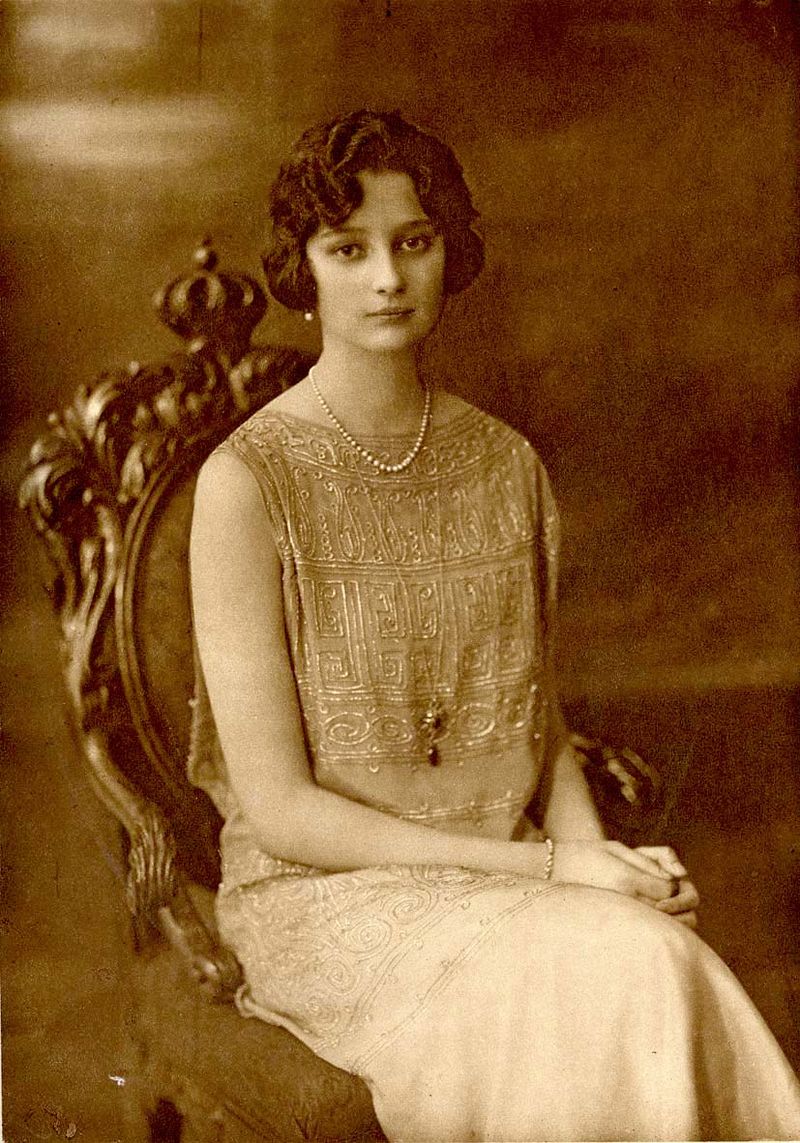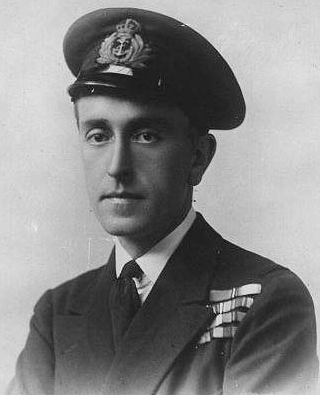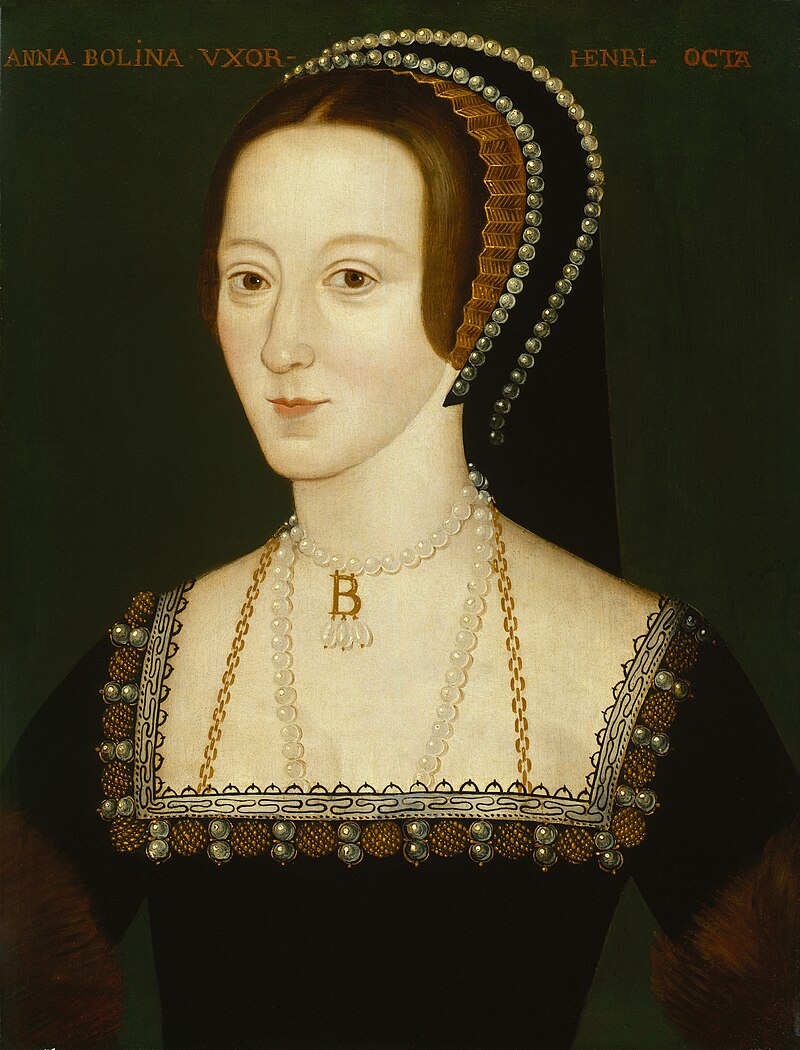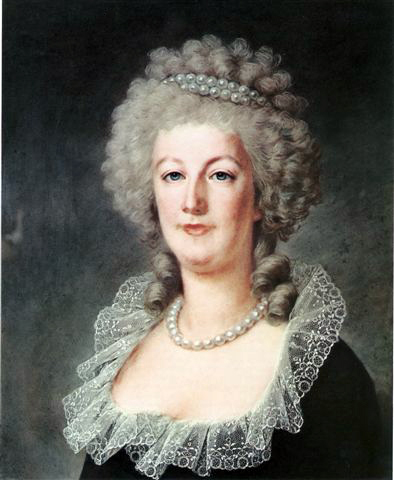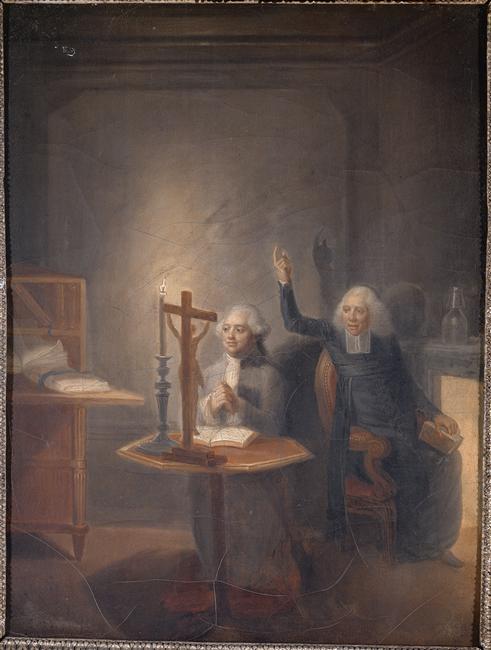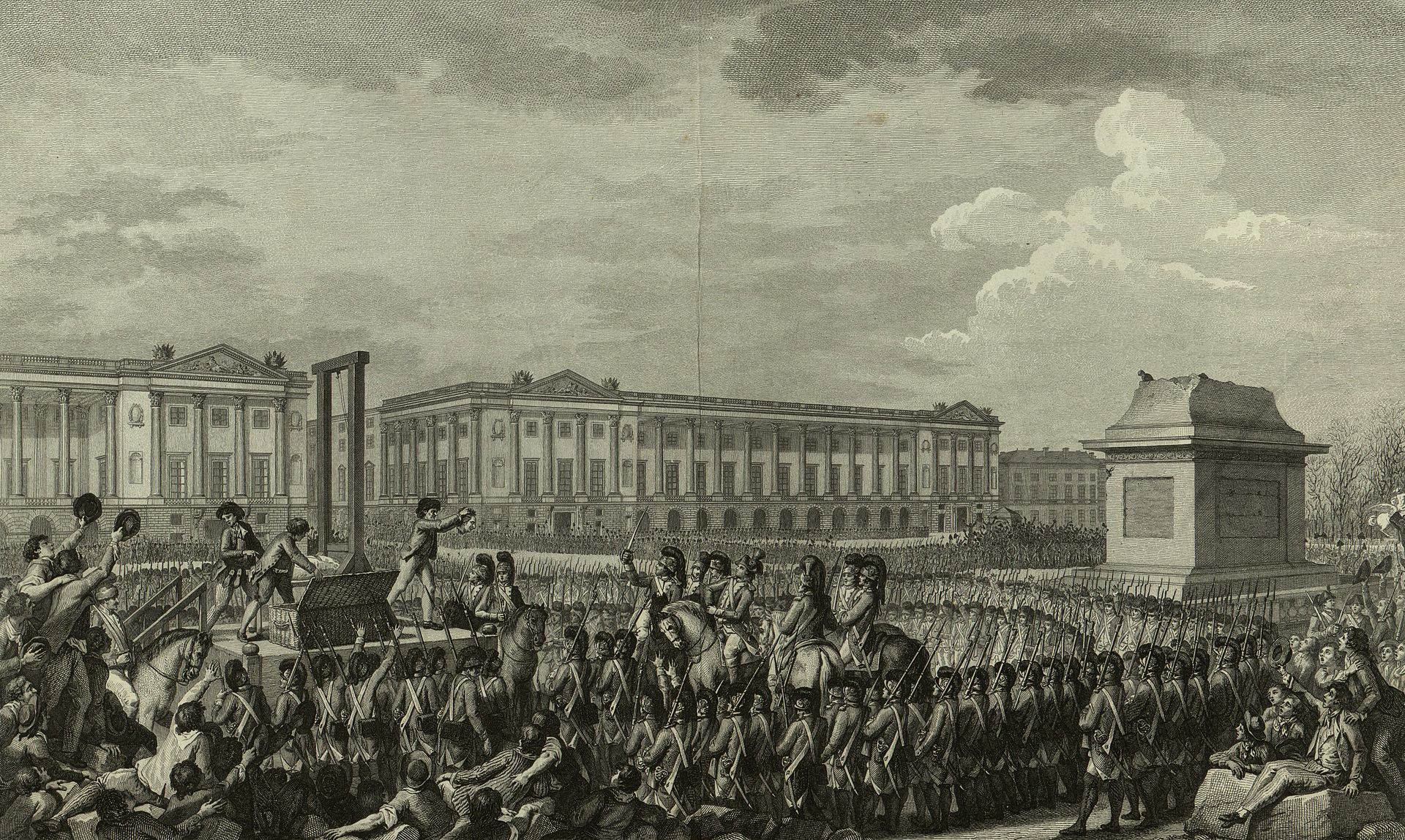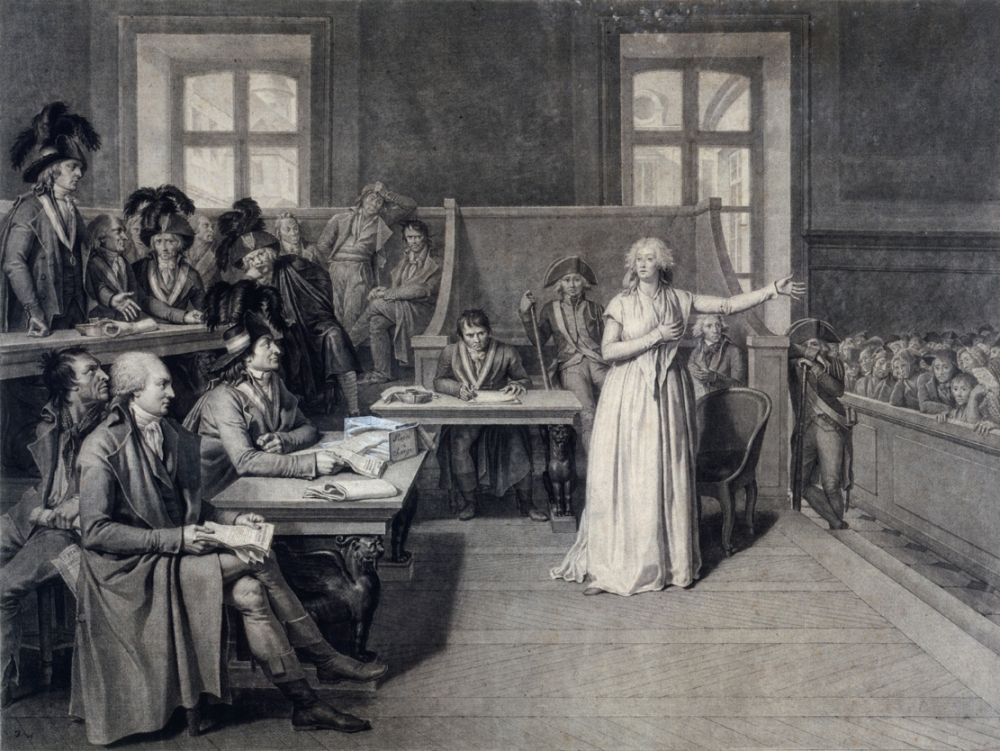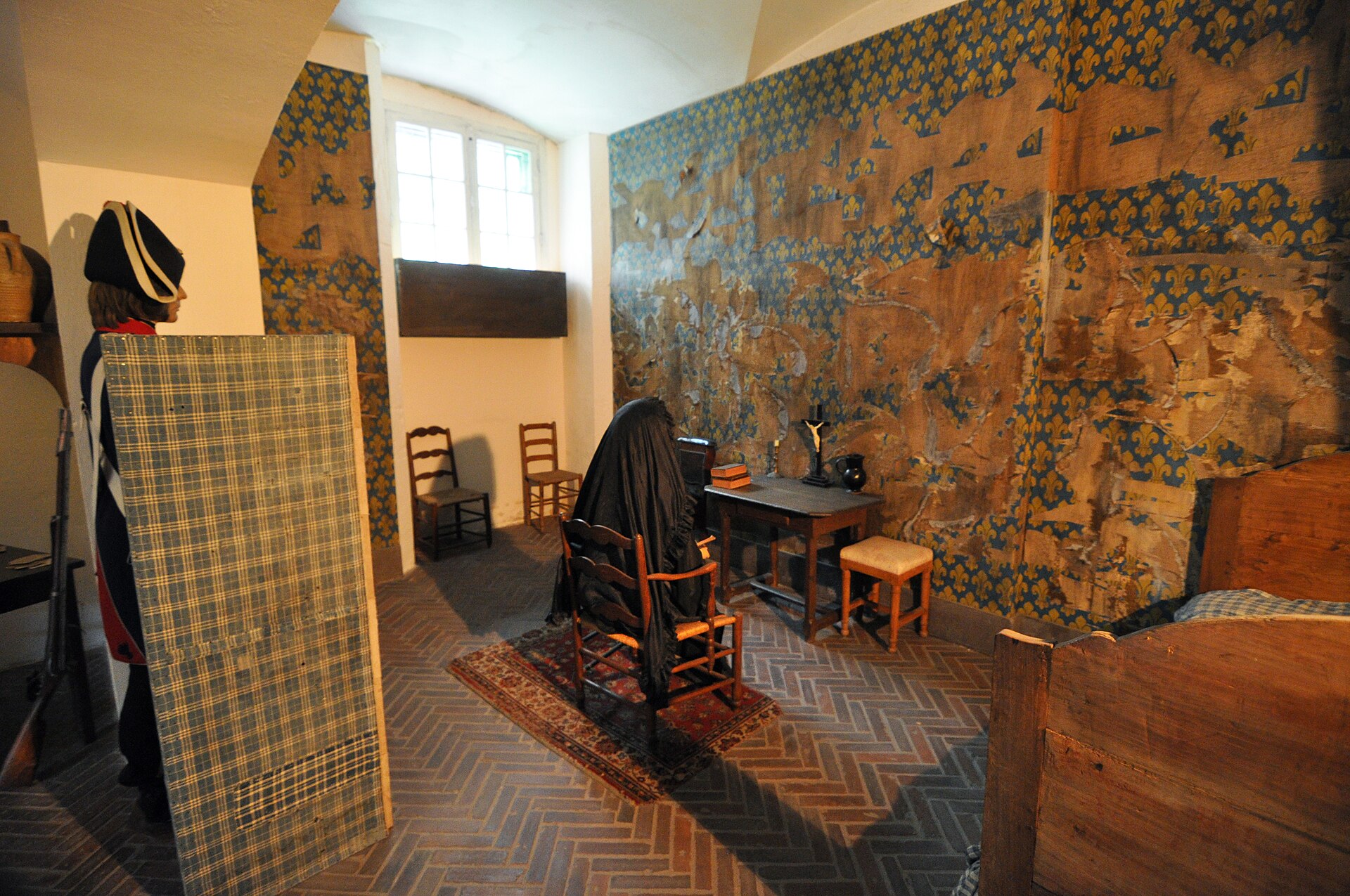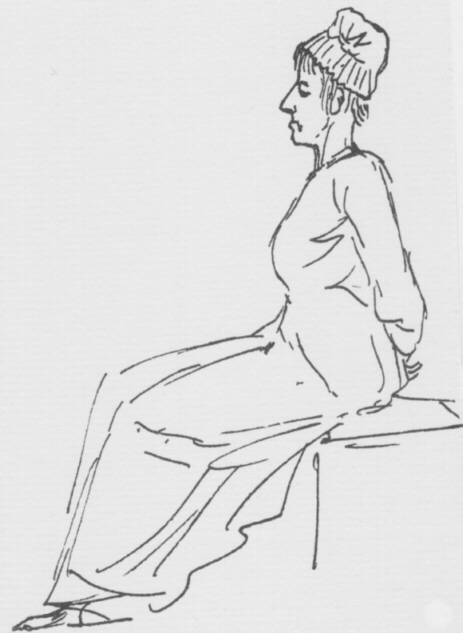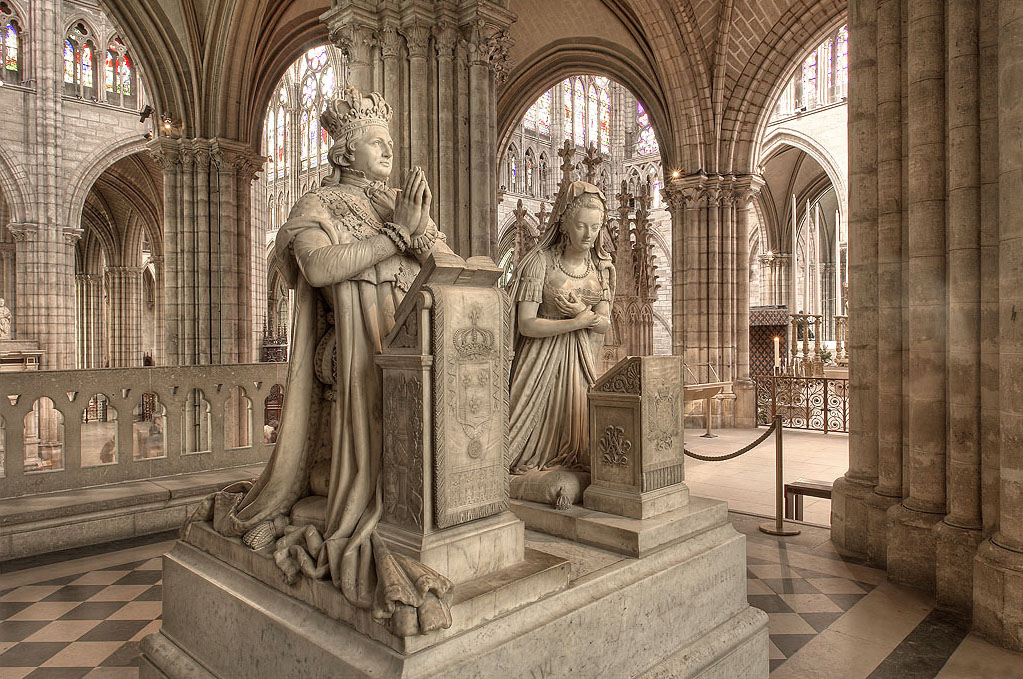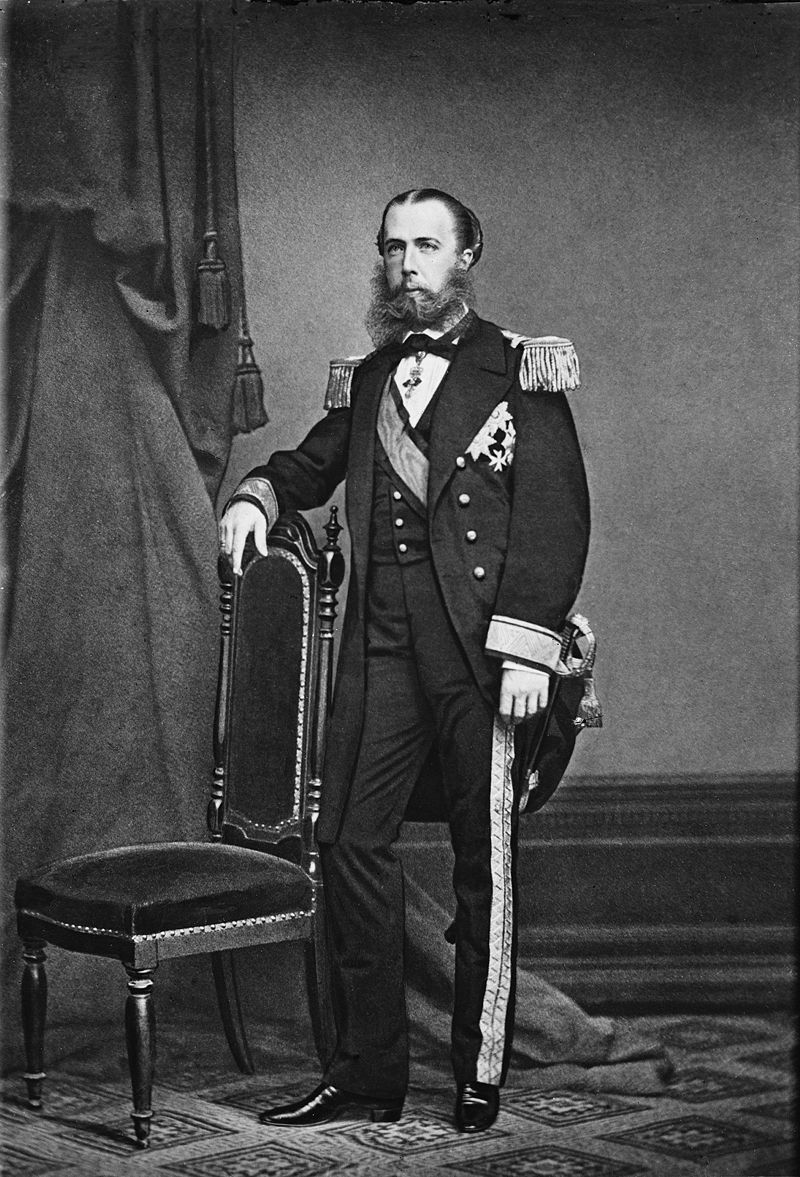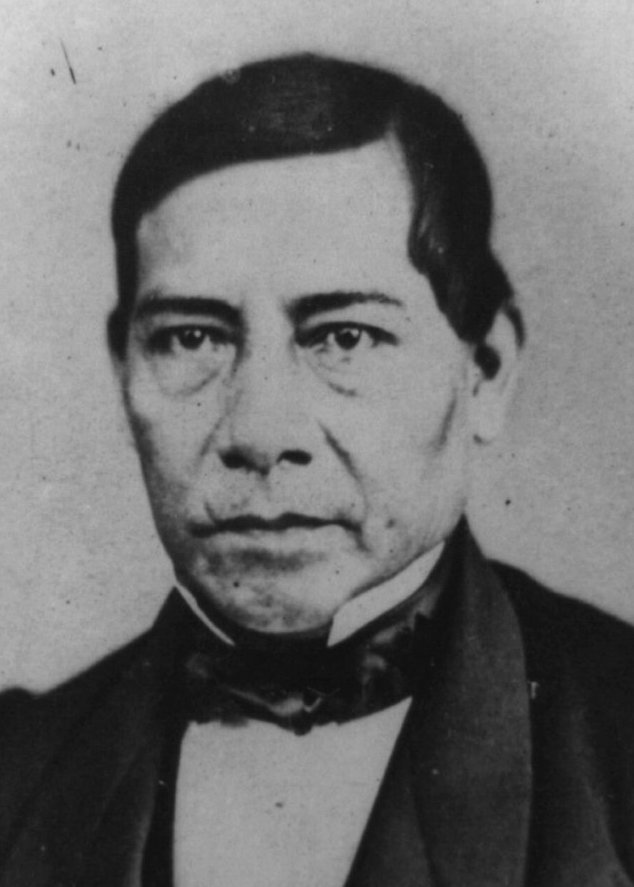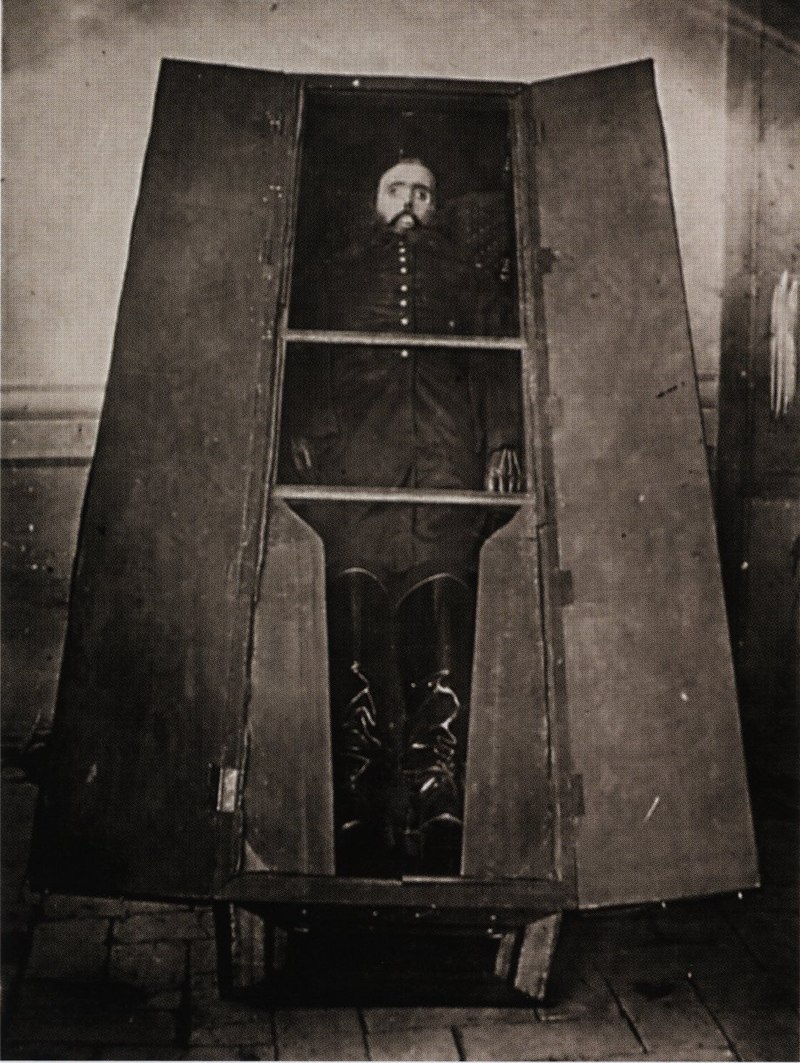compiled by Susan Flantzer
Until the advent of modern medicine, childbirth was a danger to women, both royals and commoners. Many women died from puerperal fever or childbed fever, a bacterial infection. The majority of childbed fever cases were caused by the birth attendants themselves. With no knowledge of germs, it was believed that hand washing was unnecessary. Other women died from problems that caesarean sections now prevent. I have always had a soft spot in my heart for those women who died in childbirth. Without the modern caesarean section, my two children, who were both breech babies, and I may not have survived.
Maternal deaths due to childbirth complications, although infrequent, still occur, and I would like to remember an online friend who passed away shortly after giving birth. I was an AOL Royalty Community Leader from 1998-2005 when the Community Leader program ceased to exist. During that time, I met many people on AOL who were interested in royalty via the message boards and chats I hosted. One of them was ALMACKS, whose real name was Dana Sherman. I remember Dana as a person who had strong opinions on royals and was not afraid to express her opinions and defend them. She always wanted to go to London and did so by herself during the 2002 Golden Jubilee of Queen Elizabeth II. On February 25, 2003, after giving birth to her second child, Dana passed away, aged 37. I dedicate this article to the memory of Dana.
This does not purport to be a complete list. All images are from Wikipedia unless otherwise indicated.
********************
AUSTRIA
Maria Anna of Spain, Holy Roman Empress
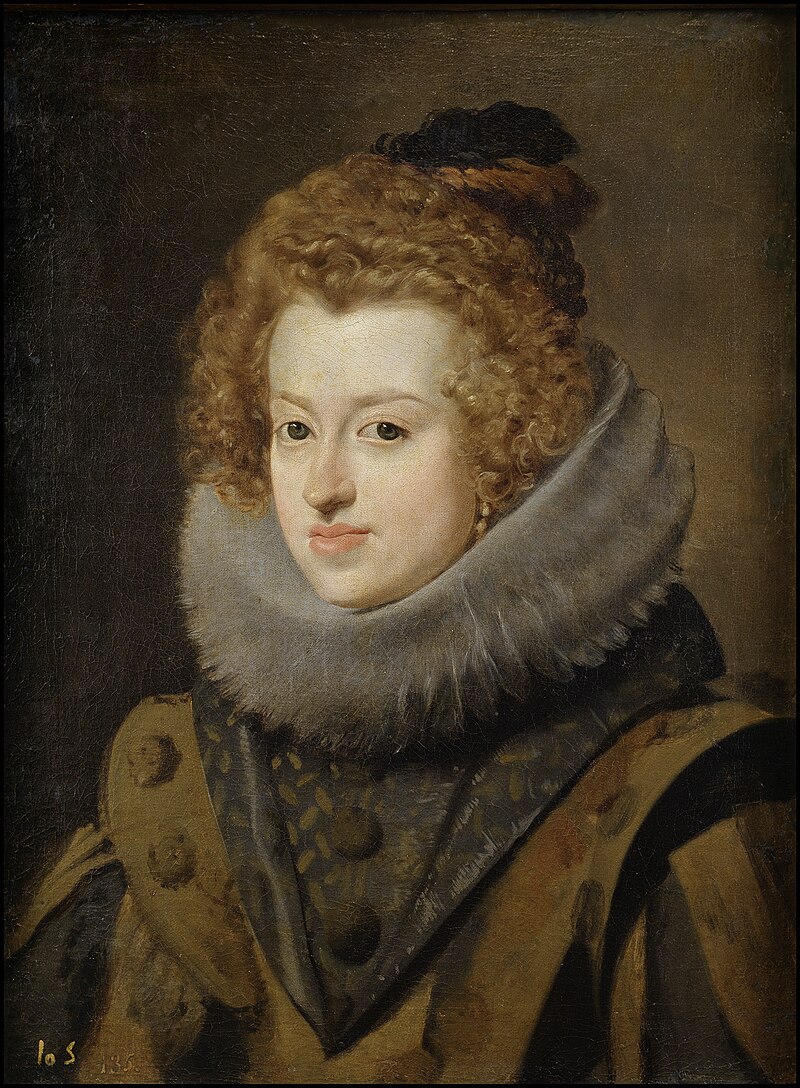
- Born: August 18, 1606 at the Palace of El Escorial in El Escorial, Spain
- Parents: King Felipe III of Spain and Margaret of Austria
- Married: Ferdinand III, Holy Roman Emperor in 1631
- Died: May 13, 1646, aged 39, at Linz Castle in Linz, Austria
- Buried: Imperial Crypt at the Capuchin Church in Vienna, Austria
- Wikipedia: Maria Anna of Spain
Maria Anna’s sixth pregnancy became known in January 1646. On May 12, 1646, she suddenly felt ill with fever and had heavy bleeding. Maria Anna died the next morning. Her unborn child, a girl, was taken out alive from her womb. She was named Maria after her mother but only lived a few hours.
********************
Maria Leopoldine of Austria, Holy Roman Empress
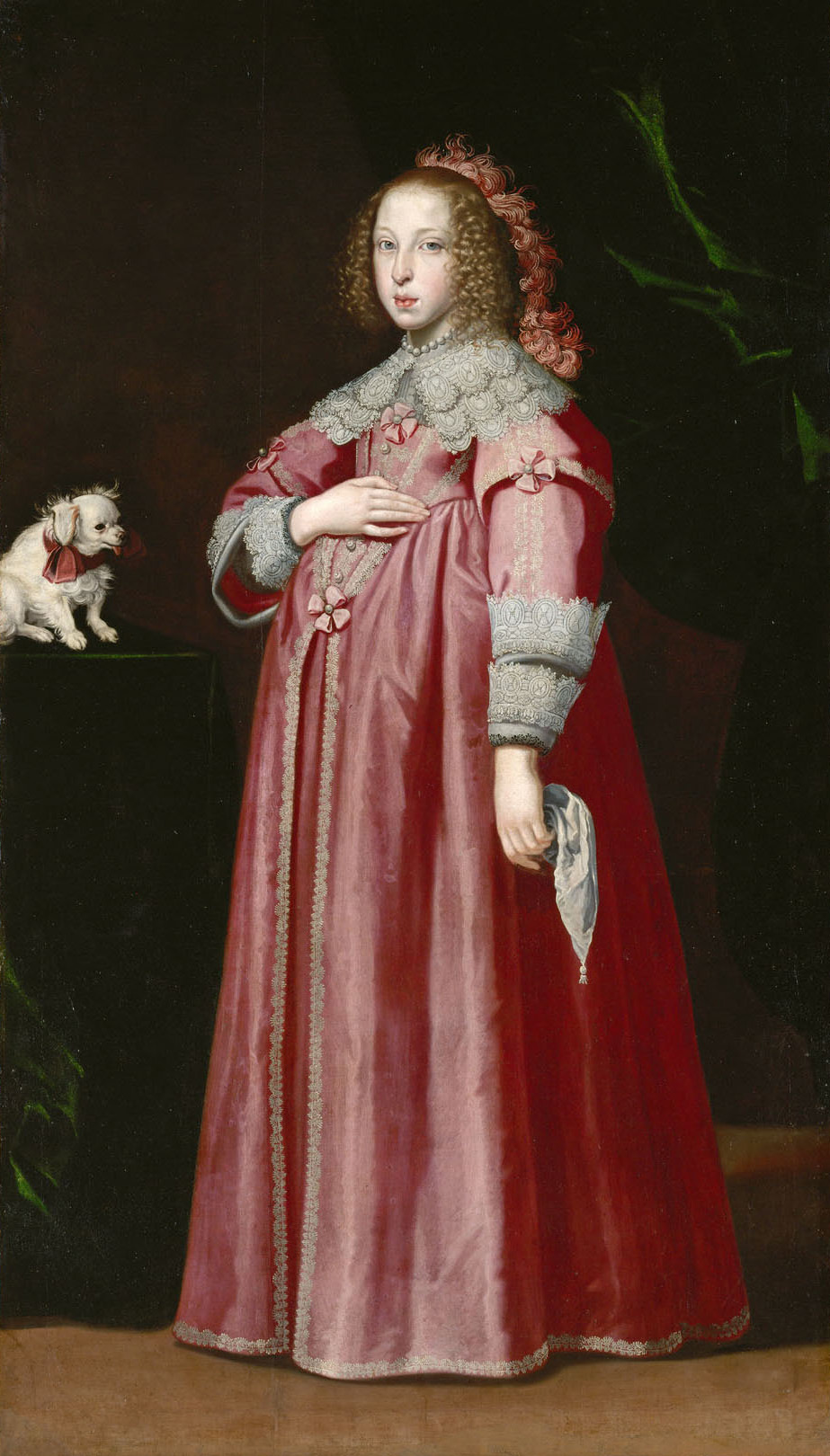
- Born: April 6, 1632 in Innsbruck, Tyrol, Austria
- Parents: Leopold V, Archduke of Austria and Claudia de’ Medici
- Married: Ferdinand III, Holy Roman Emperor in 1648
- Died: August 7, 1649, aged 17, in Vienna, Austria
- Buried: Imperial Crypt at the Capuchin Church in Vienna, Austria
- Wikipedia: Maria Leopoldine of Austria
Maria Leopoldine died following a difficult childbirth after delivering her only child Karl Josef, who lived until he was 14.
********************
Margarita Teresa of Spain, Holy Roman Empress

- Born: July 12, 1651 at the Royal Alcazar in Madrid, Spain
- Parents: King Felipe IV of Spain and Mariana of Austria
- Married: Leopold I, Holy Roman Emperor in 1666
- Died: March 12, 1673, aged 21, at Hofburg Palace in Vienna, Austria
- Buried: Imperial Crypt at the Capuchin Church in Vienna, Austria
- Wikipedia: Margarita Teresa of Spain
During her last pregnancy, Margarita Teresa was ill with bronchitis. She was already in a weakened state after giving birth to four living childbirths (only one survived infancy) and having at least two miscarriages during her six-year marriage. Her last child did not survive birth.
********************
Maria Anna of Austria, Princess of Lorraine

- Born: September 18, 1718 at Hofburg Palace in Vienna, Austria
- Parents: Charles VI, Holy Roman Emperor and Elisabeth Christine of Brunswick-Wolfenbüttel
- Married: Prince Charles Alexander of Lorraine in 1744
- Died: December 16, 1744, aged 26, in Brussels, Austrian Netherlands, now in Belgium
- Buried: Imperial Crypt at the Capuchin Church in Vienna, Austria
- Wikipedia: Maria Anna of Austria
Maria Anna went into labor on October 9, 1744 and delivered a stillborn son. She never recovered and died two months later.
********************
Elisabeth of Württemberg, Archduchess of Austria
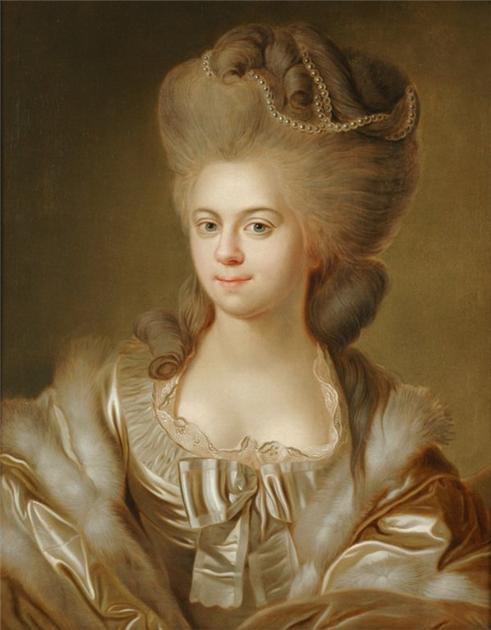
- Born: April 21, 1767, in Treptow an der Rega in Brandenburg-Pomerania, now Trzebiatów, Poland
- Parents: Friedrich II Eugene, Duke of Württemberg and Sophia Dorothea of Brandenburg-Schwedt
- Married: Archduke Franz of Austria, the future Holy Roman Emperor Franz II and Emperor Franz I of Austria, in 1788
- Died: February 18, 1790, aged 22, in Vienna, Austria
- Buried: Imperial Crypt at the Capuchin Church in Vienna, Austria
- Unofficial Royalty: Elisabeth of Württemberg, Archduchess of Austria
Elisabeth was very close to her husband’s uncle Holy Roman Emperor Joseph II and his final illness in February 1790 greatly upset the then-pregnant Elisabeth. She fainted upon seeing the dying emperor and on February 18, 1790, gave premature birth to a daughter Archduchess Ludovika Elisabeth, who died the following year. The labor had lasted more than 24 hours and Elisabeth, age 22, died because of complications. Holy Roman Emperor Joseph died two days later.
********************
Alexandra Pavlovna of Russia, Archduchess of Austria
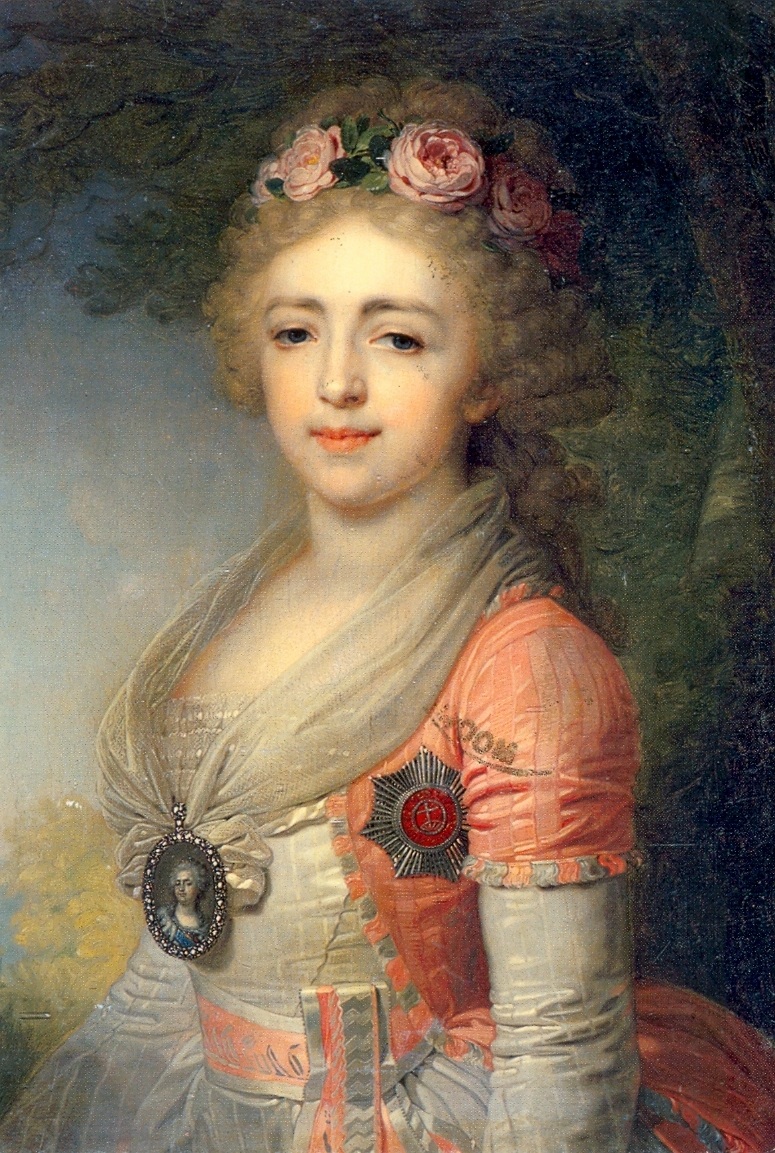
- Born: August 9, 1783 at Tsarskoye Selo in St. Petersburg, Russia
- Parents: Paul I, Emperor of All Russia and Sophie Dorothea of Württemberg
- Married: Archduke Joseph of Austria in 1799
- Died: March 16, 1801, aged 17, at Alcsút Castle in Buda, Kingdom of Hungary, now Budapest, Hungary
- Buried: Chapel of Grand Duchess Alexandra Pavlovna in Üröm, Pest, Hungary
- Wikipedia: Alexandra Pavlovna of Russia
Alexandra Pavlovna died from puerperal fever (childbed fever) after giving birth to a daughter Paulina who also died. Her death occurred the same week as her father’s murder.
********************
Maria Theresa of Naples and Sicily, Empress of Austria

- Born: June 6, 1772 at the Royal Palace of Portici in Naples, Kingdom of Naples and Sicily, now in Italy
- Parents: King Ferdinand IV & III of Naples and Sicily (later King Ferdinand I of the Two Sicilies) and Maria Carolina of Austria
- Married: Archduke Franz of Austria, the future Holy Roman Emperor Franz II and Emperor Franz I of Austria, in 1790
- Died: April 13, 1807, aged 34, at Hofburg Palace in Vienna, Austria
- Buried: Imperial Crypt at the Capuchin Church in Vienna, Austria
- Unofficial Royalty: Maria Theresa of Naples and Sicily, Empress of Austria
While pregnant with her twelfth child, Maria Theresa fell ill with the lung infection pleurisy. Her doctor bled her and this caused premature labor. Maria Theresa gave birth to her twelfth child Amalia Theresa who lived only three days. On April 13, 1807, a week after giving birth, Maria Theresa died at the age of 34. Her husband Franz was inconsolable and had to be forcibly removed from his wife’s body.
********************
BRUNSWICK-WOLFENBÜTTEL
Marie of Baden, Duchess of Brunswick-Wolfenbüttel
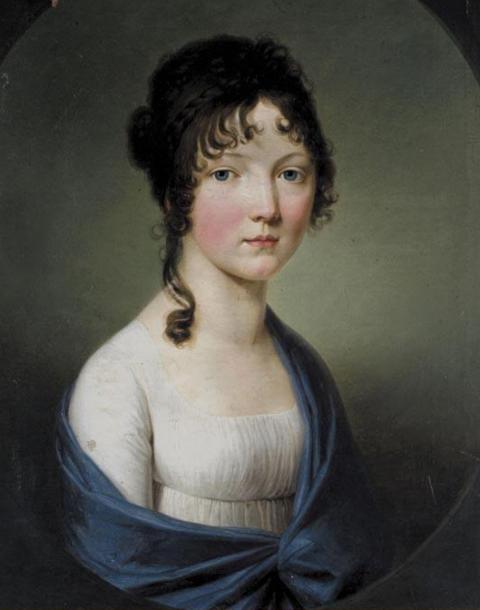
- Born: September 7, 1782 in Karlsruhe, Margraviate of Baden, now in Baden-Württemberg, Germany
- Parents: Karl Ludwig, Hereditary Prince of Baden and Amalie of Hesse-Darmstadt
- Married: Friedrich Wilhelm, Duke of Brunswick-Wolfenbüttel in 1802
- Died: April 20, 1808, aged 25, in Bruchsal, Margraviate of Baden, now in Baden-Württemberg, Germany
- Buried: Brunswick Cathedral in Brunswick, Duchy of Brunswick-Wolfenbüttel, now in Lower Saxony, Germany
- Wikipedia: Marie of Baden, Duchess of Brunswick-Wolfenbüttel
Marie had two children before dying of puerperal fever (childbed fever) four days after giving birth to a stillborn daughter.
********************
BULGARIA
Maria Luisa of Bourbon-Parma, Princess of Bulgaria

- Born: January 17, 1870 in Rome, Italy
- Parents: Robert I, Duke of Parma and Maria Pia of Bourbon-Two Sicilies
- Married: Ferdinand I, Prince of Bulgaria, the future Tsar Ferdinand I of Bulgaria, in 1893
- Died: January 31, 1899, aged 29, in Sofia, Bulgaria
- Buried: Roman Catholic Cathedral of St Louis of France in Plovdiv, Bulgaria
- Unofficial Royalty: Maria Luisa of Bourbon-Parma, Princess of Bulgaria
Having given birth to three children and expecting a fourth within five years had taken a toll on Maria Luisa’s already frail health. She developed pneumonia while pregnant with her youngest child and died a day after giving birth.
********************
DENMARK
Philippa of England, Queen of Denmark, Sweden, and Norway

- Born: June 4, 1394 at Peterborough Castle in Petersborough, Cambridgeshire, England
- Parents: Henry Bolingbroke, Earl of Northampton, Earl of Derby (the future King Henry IV of England) and Mary de Bohun
- Married: Eric of Pomerania, King of Denmark, Sweden, and Norway in 1406
- Died: January 5, 1430, aged 35, at Vadstena Abbey in Vadstena, Sweden
- Buried: St. Anna’s Chapel, which she had built at the Vadstena Abbey church
- Unofficial Royalty: Philippa of England, Queen of Denmark, Sweden, and Norway
After 23 years of marriage, Philippa gave birth, for the first and last time, to a stillborn boy. Her health deteriorated after the stillbirth, and Philippa died.
********************
Louisa of Great Britain, Queen of Denmark and Norway

- Born: December 18, 1724 at Leicester House in London, England
- Parents: King George II of Great Britain and Caroline of Ansbach
- Married: King Frederik V of Denmark in 1743
- Died: December 19, 1751, aged 27, at Christiansborg Palace in Copenhagen, Denmark
- Buried: Roskilde Cathedral in Roskilde, Denmark
- Unofficial Royalty: Louisa of Great Britain, Queen of Denmark and Norway
While pregnant with her sixth child, Louisa died due to complications from a miscarriage.
********************
ENGLAND/GREAT BRITAIN/UNITED KINGDOM
Elizabeth of Rhuddlan, Countess of Hereford

- Born: August 7, 1282 at Rhuddlan Castle in Denbighshire, Wales
- Parents: King Edward I of England and Eleanor of Castile
- Married: (1) John I, Count of Holland in 1297 (2) Humphrey de Bohun, 4th Earl of Hereford in 1302
- Died: May 5, 1316, aged 33, in Quendon, Essex, England
- Buried: Walden Abbey in Essex, England
- Unofficial Royalty: Elizabeth of Rhuddlan
Elizabeth had eleven children with her second husband Humphrey de Bohun. She died shortly after giving birth to her 11th child Isabella, who also died.
********************
Mary de Bohun, Countess of Northampton, Countess of Derby

- Born: circa 1369/70
- Parents: Humphrey de Bohun, 7th Earl of Hereford and Joan Fitzalan
- Married: Henry Bolingbroke, Earl of Derby, Earl of Northampton, the future King Henry IV of England, in 1380
- Died: June 4, 1394, aged about 26, at Peterborough Castle in Northamptonshire, England
- Buried: Collegiate Church of the Annunciation of Our Lady of the Newarke in Leicester, England
- Unofficial Royalty: Mary de Bohun, Countess of Northampton, Countess of Derby
Mary died giving birth to her seventh child Philippa, who survived and married Eric of Pomerania, King of Denmark and Norway. Mary’s husband, the future King Henry IV of England, was the son of John of Gaunt, son of King Edward III of England. She was the mother of King Henry V of England.
********************
Elizabeth of York, Queen of England

- Born: February 11, 1466 at the Palace of Westminster in London, England
- Parents: King Edward IV of England and Elizabeth Woodville
- Married: King Henry VII of England in 1486
- Died: 11 February 11, 1503, aged 37, at the Tower of London in London, England
- Buried: Henry VII Chapel at Westminster Abbey in London, England
- Unofficial Royalty: Elizabeth of York, Queen of England
Elizabeth was the daughter of Edward IV, the sister of Edward V, the niece of Richard III, the wife of Henry VII, the mother of Henry VIII and the grandmother of Edward VI, Mary I, and Elizabeth I. After giving birth to her seventh child Katherine on February 2, 1503, Elizabeth died of puerperal fever (childbed fever) on her 37th birthday. Henry VII was so shaken by her death that he went into seclusion and would only see his mother. Little Katherine died on February 18, 1503.
********************
Jane Seymour, Queen of England

- Born: circa 1508, most likely at the family home, Wolf Hall in Wiltshire, England
- Parents: Sir John Seymour and Margery Wentworth
- Married: King Henry VIII of England in 1536
- Died: October 25, 1537, aged 28-29 at Hampton Court Palace in Richmond upon Thames, England
- Buried: St. George’s Chapel, Windsor Castle in Windsor, England
- Unofficial Royalty: Jane Seymour, Queen of England
After a difficult labor, lasting two days and three nights, Jane finally gave King Henry VIII his long-awaited son, King Edward VI of England. On October 17, 1537, Jane’s condition deteriorated and she was given the last rites. Seven days later, she died from puerperal fever (childbed fever). Henry VIII decided his final resting place would be next to Jane.
********************
Catherine Parr, Queen of England

- Born: 1512 in Blackfriars, London, England
- Parents: Sir Thomas Parr and Maud Green
- Married: (1) Sir Edward Borough (2) John Neville, 3rd Baron Latymer (3) King Henry VIII of England (4) Thomas Seymour, 1st Baron Seymour of Sudeley
- Died: September 5, 1548, aged 36, at Sudeley Castle in Gloucestershire, England
- Buried: St. Mary’s Chapel at Sudeley Castle in Gloucestershire, England
- Unofficial Royalty: Catherine Parr, Queen of England
After the death of Henry VIII, Catherine married Thomas Seymour, the brother of Henry’s third wife Jane Seymour. It was during this marriage that Catherine became pregnant for the first time. She gave birth to a daughter Mary but died from puerperal fever (childbed fever) six days later. After Mary’s father was beheaded, she came under the care of the Dowager Duchess of Suffolk. The last mention of Mary Seymour was when she was two. It is thought she died as a child.
********************
Princess Charlotte of Wales

- Born: January 7, 1796 at Carlton House in London, England
- Parents: George, Prince of Wales, the future King George IV of the United Kingdom, and Caroline of Brunswick
- Married: Prince Leopold of Saxe-Coburg-Saalfeld in 1816; Leopold was the uncle of Queen Victoria and Prince Albert and became King of the Belgians in 1831.
- Died: November 6, 1817, aged 21, at Claremont House in Surrey, England
- Buried: St. George’s Chapel, Windsor Castle in Windsor, England
- Unofficial Royalty: Princess Charlotte of Wales
- Unofficial Royalty: Death of Princess Charlotte of Wales in childbirth and its impact on the succession to the British throne
Twenty-one-year-old Princess Charlotte, the only child of George, Prince of Wales, died after delivering a stillborn son. She was mourned by the British people in a manner similar to the mourning of Diana, Princess of Wales. Charlotte’s pregnancy and delivery had been grossly mismanaged and the doctor in charge later committed suicide. Charlotte was buried at St. George’s Chapel, Windsor Castle with her stillborn son at her feet.
********************
FRANCE
Isabella of Hainault, Queen of France

- Born: April 5, 1170 in Valenciennes, County of Hainault, now in France
- Parents: Baldwin V, Count of Hainault, and Margaret I, Countess of Flanders
- Married: King Philippe II of France in 1180
- Died: March 15, 1190, aged 19, in Paris, France
- Buried: Cathedral of Notre-Dame de Paris in Paris, France
- Wikipedia: Isabella of Hainault, Queen of France
Isabella’s first child was the future King Louis VIII of France. Her second pregnancy was extremely difficult. She gave birth to twin boys named Robert and Philip. However, due to complications, Isabella died the next day. The twin boys lived only four days.
********************
Joan of England, Queen of Sicily, Countess of Toulouse

- Born: October 1165 at Château d’Angers in the County of Anjou, now in France
- Parents: King Henry II of England and Eleanor of Aquitaine
- Married: (1) King William II of Sicily in 1177 (2) Raymond VI, Count of Toulouse in 1196
- Died: September 4, 1199, aged 33, at Fontevrault Abbey Fontevraud-l’Abbaye, near Chinon, in the Duchy of Anjou, now in France
- Buried: Fontevrault Abbey Fontevraud-l’Abbaye, near Chinon, in the County of Anjou, now in France
- Unofficial Royalty: Joan of England, Queen of Sicily, Countess of Toulouse
Joan gave birth to a son while married to William II of Sicily but the child died in infancy. She may also have had miscarriages during her first marriage. Joan had successfully given birth to a son and a daughter by Raymond VI of Toulouse. While Joan was pregnant with her third child, she was left to deal with a rebellion in Toulouse. Fearing her safety, she traveled to northern France, hoping for protection from her brother King Richard I of England but he had died earlier in the year. Joan then fled to her mother’s court at Rouen, Normandy. Joan died shortly after giving birth to a son who lived just long enough to be baptized Richard. She was veiled as a nun on her deathbed.
********************
Marie of Luxembourg, Queen of France and Navarre

- Born: circa 1304
- Parents: Heinrich VII, Holy Roman Emperor and Margaret of Brabant
- Married: King Charles IV of France in 1322
- Died: March 26, 1324, aged 19
- Buried: Dominican Abbey in Montargis, France
- Wikipedia: Marie of Luxembourg, Queen of France and Navarre
Marie gave birth to a stillborn daughter in 1323. During her second pregnancy, she was seriously injured in a road accident when her cart overturned in a ditch. The accident caused her to give birth to a premature son who died the next day. Marie died from childbirth complications and injuries from the accident.
********************
Jeanne of Bourbon, Queen of France
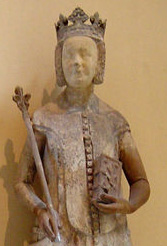
- Born: February 3, 1338 at the Château de Vincennes in Vincennes, France
- Parents: Peter I, Duke of Bourbon, and Isabella of Valois
- Married: King Charles V of France in 1350
- Died: February 6, 1378, aged 40, at the Hôtel Saint-Pol in Paris, France
- Buried: Basilica of Saint-Denis near Paris, France
- Wikipedia: Jeanne of Bourbon, Queen of France
Jeanne gave birth to nine children but only two reached adulthood. The chronicler Jean Froissart recorded that Jeanne took a bath against her physicians’ advice. Soon after, she went into labor and died two days after giving birth to her daughter Catherine.
********************
Isabella of Valois, Queen of England, Duchess of Orléans

King Richard II of England receiving his six-year-old bride Isabella of Valois from her father King Charles VI of France
- Born: November 9, 1389, at the Louvre Palace in Paris, France
- Parents: King Charles VI of France and Isabeau of Bavaria
- Married: (1) King Richard II of England in 1396 (2) Charles, Duke of Orléans in 1406
- Died: September 13, 1409, aged 19, in Blois, France
- Buried: Abbey of St. Saumer in Blois, France; in 1624, Isabella’s remains were transferred to the Church of the Celestines in Paris, France
- Unofficial Royalty: Isabella of Valois, Queen of England, Duchess of Orléans
Isabella was the second wife of King Richard II of England who was twenty-two years older. In 1399, Richard was deposed by his cousin King Henry IV of England and imprisoned at Pontefract Castle in Yorkshire, England where he died on or around February 14, 1400. The exact cause of his death, thought to have been starvation, is unknown. Isabella returned to France and married her cousin Charles, Duke of Orléans in 1406. Three years later, Isabella died a few hours after giving birth to her only child, a daughter named Joan who survived. Isabella’s younger sister Catherine married King Henry V of England and was the mother of King Henry VI of England.
********************
Auguste of Baden-Baden, Duchess of Orléans

- Born: November 10, 1704 at Schloss Johannisburg in Aschaffenburg, Kingdom of Bavaria, now in Bavaria, Germany
- Parents: Ludwig Wilhelm, Margrave of Baden-Baden, and Sibylle of Saxe-Lauenburg
- Married: Louis d’Orléans, Duke of Orléans, the grandson of King Louis XIV of France, in 1724
- Died: August 8, 1726, aged 21, at the Palais-Royal in Paris, France
- Buried: Val-de-Grâce Convent in Paris, France
- Wikipedia: Auguste of Baden-Baden, Duchess of Orléans
Known in France as Auguste de Bade, she died three days after giving birth to her second child who survived for less than two years. Auguste de Bade was the paternal great-grandmother of Louis-Philippe I, King of the French.
********************
Louise Diane d’Orléans, Princess of Conti

- Born: June 27, 1716 at the Palais-Royal in Paris, France
- Parents: Philippe d’Orléans, Duke of Orléans and Françoise Marie de Bourbon, legitimized daughter of King Louis XIV of France and his mistress Madame de Montespan
- Married: Louis François de Bourbon, Prince of Conti in 1732
- Died: September 26, 1736, aged 20, at the Château d’Issy in Issy, France
- Buried: Saint-André-des-Arcs Church in L’Isle d’Adam, France
- Wikipedia: Louise Diane d’Orleans, Princess of Conti
In 1734, Louise Diane gave birth to her first child, a son, but died at age 20 while delivering a stillborn son.
********************
Anne Thérèse of Savoy, Princess of Soubise

- Born: November 1, 1717 at the Hôtel de Soissons in Paris, France
- Parents: Victor Amadeus, Prince of Carignano and Maria Vittoria Francesca of Savoy
- Married: Charles de Rohan, Prince of Soubise in 1741
- Died: April 5, 1745, aged 27, at the Hôtel de Soubise in Paris, France
- Buried:
- Wikipedia: Anne Thérèse of Savoy, Princess of Soubise,
Anne Thérèse gave birth to a daughter in 1743, but two years later died in childbirth along with her second child. Her daughter, Victoire Armande Josèphe de Rohan, was the governess of the children of Louis XVI and Marie Antoinette.
********************
Maria Teresa Rafaela of Spain, Dauphine of France
- Born: June 11, 1726 at the Royal Alcazar of Seville in Seville, Spain
- Parents: King Felipe V of Spain and Elisabeth Farnese
- Married: Louis, Dauphin of France, son of King Louis XV of France, in 1745
- Died: July 22, 1746, aged 20, at the Palace of Versailles in Versailles, France
- Buried: Basilica of Saint-Denis near Paris, France
- Wikipedia: Maria Teresa Rafaela of Spain, Dauphine of France
Marie Thérèse Raphaëlle d’Espagne, as she was known in France, died three days after giving birth to her first child, a daughter who died less than two years later. Her husband was so distressed by her death that his father Louis XV had to physically drag him away from Maria Teresa Rafaela’s deathbed.
********************
Maria Teresa Felicitas d’Este of Modena, Duchess of Penthièvre
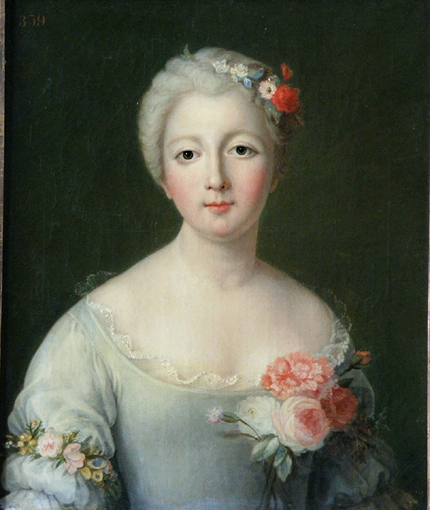
- Born: October 6, 1726 at the Ducal Palace, Modena, Duchy of Modena, now in Italy
- Parents: Francesco III, Duke of Modena and Reggio and Charlotte Aglaé d’Orléans, granddaughter of King Louis XIV of France and his mistress Françoise-Athénaïs, Marquise de Montespan
- Married: Louis Jean Marie de Bourbon, Duke of Penthièvre, grandson of King Louis XIV and his mistress Françoise-Athénaïs, Marquise de Montespan, in 1744
- Died: April 30, 1754, aged 27, at the Château de Rambouillet in Rambouillet, France
- Buried: Originally buried at the Château de Rambouillet chapel, moved to Chapelle Royale de Dreux in Dreux, France
- Wikipedia: Maria Teresa Felicitas d’Este, Duchess of Penthièvre
Maria Teresa gave birth to six children before she died in childbirth along with her seventh child. Maria Teresa was the maternal grandmother of Louis-Philippe I, King of the French.
********************
Victoria of Saxe-Coburg and Gotha, Duchess of Nemours
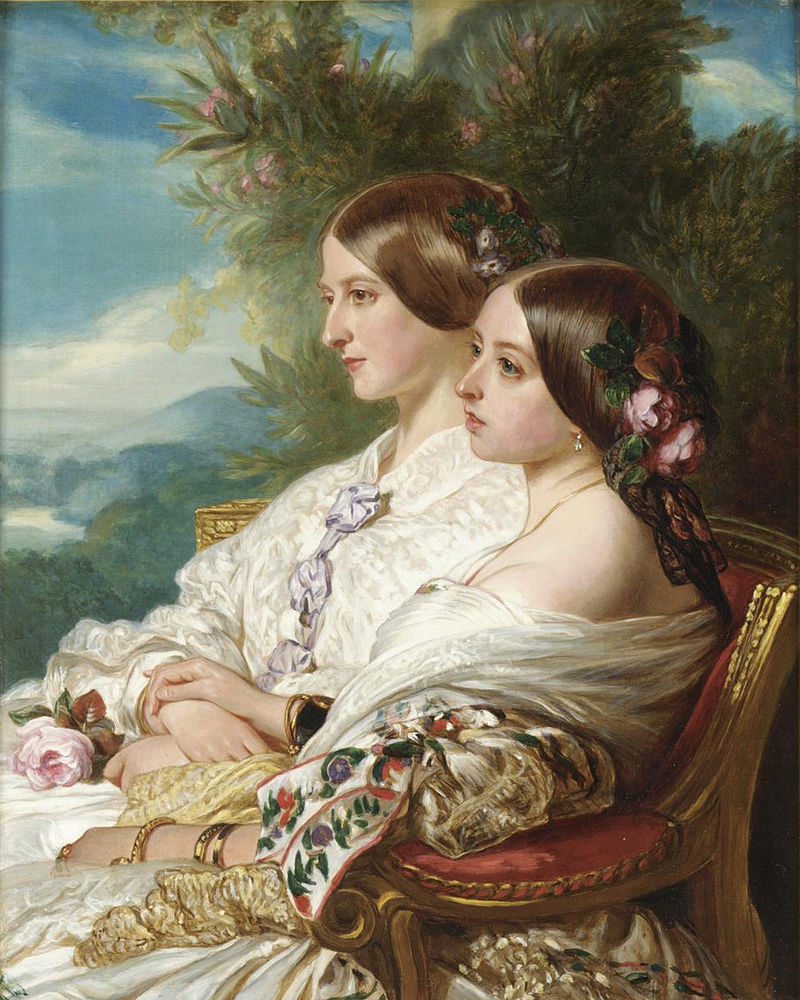
Victoria, Duchess of Nemours on the left with her first cousin Queen Victoria on the right
- Born: February 14, 1822 in Vienna, Austria
- Parents: Prince Ferdinand of Saxe-Coburg and Gotha and Princess Maria Antonia Koháry
- Married: Prince Louis d’Orléans, Duke of Nemours, second son of Louis Philippe I, King of the French
- Died: November 10, 1857, aged 35, at Claremont House in Esher, England
- Buried: Chapel of Saint Charles Borromeo in Weybridge, England; in 1979 her remains were transferred to the Royal Chapel of Dreux in Dreux, France, the traditional burial place of the House of Orléans
- Wikipedia: Victoria of Saxe-Coburg and Gotha, Duchess of Nemours
Victoria was a first cousin of Queen Victoria and Prince Albert. In 1848, when her father-in-law lost his throne, the Orléans family settled in England where they were welcomed by Queen Victoria and Prince Albert. Victoria died from puerperal fever (childbed fever) ten days after giving birth to her fourth child Blanche who survived.
********************
HESSE-KASSEL
Alexandra Nikolaevna of Russia, Princess Friedrich Wilhelm of Hesse-Kassel

- Born: June 24, 1825 at Tsarkoye Selo in St. Petersburg, Russia
- Parents: Nicholas I, Emperor of All Russia and Charlotte of Prussia
- Married: Prince Wilhelm of Hesse-Kassel in 1844
- Died: August 10, 1844, aged 19, at Tsarkoye Selo in St. Petersburg, Russia
- Buried: Peter and Paul Cathedral in St. Petersburg, Russia
- Wikipedia: Alexandra Nikolaevna of Russia, Princess Friedrich Wilhelm of Hesse-Kassel
Shortly before her wedding in January 1844, Alexandra became ill with tuberculosis and this complicated the pregnancy which soon followed. She was never well enough to travel to Hesse-Kassel and so the newlyweds stayed in St. Petersburg, where Alexandra’s health rapidly declined. Three months before her due date, Alexandra went into labor. She gave birth to a boy named Wilhelm but he died shortly after his birth and Alexandra died later the same day.
********************
INDIA – MUGHAL EMPIRE
Mumtaz Mahal

- Born: Arjumand Banu on April 27, 1593 in Agra, Mughal Empire, now in India
- Parents: Abu’l-Hasan Asaf Khan and Diwanji Begum
- Married: Prince Khurram, known as Shah Jahan, in 1612
- Died: June 17, 1631, aged 38, in Burhanpur, Mughal Empire, now in India
- Buried: Originally buried at Burhanpur, moved to the Taj Mahal in Agra, Mughal Empire, now in India
- Wikipedia: Mumtaz Mahal
Mumtaz died after a prolonged labor of approximately 30 hours while giving birth to her fourteenth child, Gauhara Begum who lived for 75 years. She was originally buried at Burhanpur. Her distraught husband planned a suitable mausoleum in Agra for his wife…the Taj Mahal. When he died, Shah Jahan was buried next to his wife.

********************
MECKLENBURG-SCHWERIN
Anna of Hesse and by Rhine, Grand Duchess of Mecklenburg-Schwerin

- Born: May 25, 1843 in Bessungen, Grand Duchy of Hesse and by Rhine
- Parents: Prince Karl of Hesse and by Rhine and Princess Elisabeth of Prussia
- Married: Friedrich Franz II, Grand Duke of Mecklenburg-Schwerin in 1864
- Died: April 16, 1865, aged 21, in Schwerin, Grand Duchy of Mecklenburg-Schwerin, now in Mecklenburg-Vorpommern, Germany
- Buried: Schwerin Cathedral in Schwerin, Grand Duchy of Mecklenburg-Schwerin, now in Mecklenburg-Vorpommern, Germany
- Unofficial Royalty: Anna of Hesse and by Rhine, Grand Duchess of Mecklenburg-Schwerin
Anna died of puerperal fever (childbed fever) a week later after giving birth to her only child, a daughter Anna, who died at age 16.
********************
MECKLENBURG-STRELITZ
Friederike of Hesse-Darmstadt
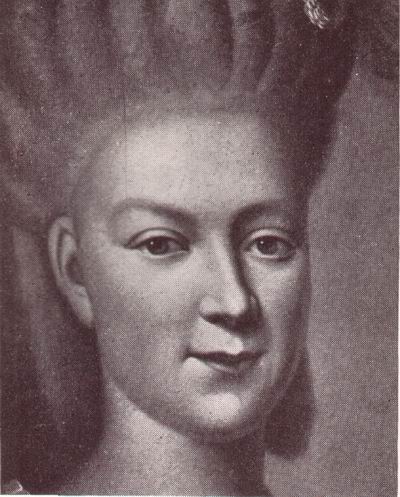
- Born: August 20, 1752 in Darmstadt, Landgraviate of Hesse-Darmstadt, now in Hesse, Germany
- Parents: Prince Georg Wilhelm of Hesse-Darmstadt and Countess Maria Luise Albertine of Leiningen-Falkenburg-Dagsburg
- Married: Carl II, Duke of Mecklenburg-Strelitz (future Grand Duke of Mecklenburg-Strelitz) in 1768
- Died: May 22, 1782, aged 29, in Hanover, Electorate of Hanover
- Buried: New Crypt at the Johanniterkirche in Mirow, Duchy of Mecklenburg-Strelitz, now in Mecklenburg-Vorpommern, Germany
- Unofficial Royalty: Friederike of Hesse-Darmstadt
Friederike died of childbirth complications three days after giving birth to her tenth child Augusta who lived just one day, in Hanover, where her husband was Field Marshal of the Household Brigade.
********************
Charlotte of Hesse-Darmstadt, Duchess of Mecklenburg-Strelitz

- Born: November 5, 1755 in Darmstadt, Landgraviate of Hesse-Darmstadt, now in Hesse, Germany
- Parents: Prince Georg Wilhelm of Hesse-Darmstadt and Countess Maria Louise Albertine of Leiningen-Falkenburg-Dagsburg
- Married: Carl II, Duke of Mecklenburg-Strelitz (future Grand Duke of Mecklenburg-Strelitz) in 1784. Her sister Friederike (see above) was Carl’s first wife and had died in childbirth two years earlier.
- Died: December 12, 1785, aged 30, in Hanover, Electorate of Hanover
- Buried: New Crypt at the Johanniterkirche in Mirow, Duchy of Mecklenburg-Strelitz, now in Mecklenburg-Vorpommern, Germany
- Unofficial Royalty: Charlotte of Hesse-Darmstadt, Duchess of Mecklenburg-Strelitz
Charlotte died after giving birth to her only child, a son, in Hanover where her husband Carl was serving as Governor-General for his brother-in-law, King George III of Great Britain. Charlotte’s son Carl served in the Prussian army during the Napoleonic Wars and later served as President of the Prussian State Council.
********************
MODENA
Isabella of Savoy, Hereditary Princess of Modena

- Born: March 2, 1591 in Turin, Duchy of Savoy, now in Italy
- Parents: Carlo Emanuele I, Duke of Savoy and Catherine Michelle of Spain, daughter of King Felipe II of Spain
- Married: Alfonso d’Este, Hereditary Prince of Modena, the future Alfonso III d’Este, Duke of Modena, in 1608
- Died: August 22, 1626, aged 35, in the Duchy of Modena, now in Italy
- Buried:
- Wikipedia: Isabella of Savoy, Hereditary Princess of Modena
Isabella gave birth to a total of fourteen children but only seven survived infancy. She died giving birth to her fourteenth child, Anna Beatrice d’Este, who lived to be 64-years-old.
********************
Maria Caterina Farnese, Duchess of Modena

- Born: February 18, 1615 in the Duchy of Parma, now in Italy
- Parents: Ranuccio I Farnese, Duke of Parma and Margherita Aldobrandini
- Married: Francesco I d’Este, Duke of Modena in 1631
- Died: July 25, 1646, aged 31, at the Ducal Palace of Sassuolo, in the Duchy of Modena, now in Italy
- Buried:
- Wikipedia: Maria Caterina Farnese, Duchess of Modena
Maria Caterina died giving birth to her last child, a son, who died in infancy like three of her other children.
********************
Charlotte of Brunswick-Lüneburg, Duchess of Modena

- Born: March 6, 1671 at Schloss Herrenhausen in Hanover, Brunswick-Lüneburg, now in Lower Saxony, Germany
- Parents: Johann Friedrich Duke of Brunswick-Lüneburg and Benedicta Henrietta of the Palatinate
- Married: Rinaldo d’Este, Duke of Modena in 1696
- Died: September 29, 1710, aged 39, at the Ducal Palace of Modena, in the Duchy of Modena, now in Italy
- Buried: Church of San Vincenzo in Modena, Duchy of Modena, now in Italy
- Wikipedia: Charlotte of Brunswick-Lüneburg, Duchess of Modena
Charlotte gave birth to seven children but she died giving birth to her last child, a daughter, who died at birth.
********************
NASSAU
Elizabeth Mikhailovna of Russia, Duchess of Nassau

- Born: May 26, 1826 at the Kremlin in Moscow, Russia
- Parents: Grand Duke Mikhail Pavlovich of Russia and Princess Charlotte of Württemberg
- Married: Adolf, Duke of Nassau (the future Adolphe I, Grand Duke of Luxembourg) in 1844
- Died: January 28, 1845, aged 18 in Wiesbaden, Duchy of Nassau, now in Hesse, Germany
- Buried: St. Elizabeth’s Church in Neroberg Park in Wiesbaden, Duchy of Nassau, now in Hesse, Germany
- Unofficial Royalty: Elizabeth Mikhailovna of Russia, Duchess of Nassau
Elizabeth Mikhailovna was the granddaughter of Paul I, Emperor of All Russia, and the great-granddaughter of Catherine the Great. She died at age 18 while giving birth to her first child, a daughter who did not survive. Her marriage had been a love match and her grieving husband had a Russian Orthodox church built around her grave in Wiesbaden (now in Germany). The church was dedicated to St. Elizabeth, the mother of John the Baptist, who had been Elizabeth Mikhailovna’s patron saint.
********************
NORWAY
Margaret of Scotland, Queen of Norway
- Born: February 28, 1261 at Windsor Castle in Windsor, Berkshire, England
- Parents: King Alexander III of Scotland and Margaret of England, daughter of King Henry III of England
- Married: King Eric II of Norway in 1281
- Died: April 9, 1283, aged 22, in Tønsberg, Vestfold, Norway
- Buried: Christ Church in Bergen, Norway
- Wikipedia: Margaret of Scotland, Queen of Norway
Queen Margaret died in Tønsberg, shortly after giving birth to her only child Margaret, Maid of Norway, who would become Queen of the Scots upon the death of her grandfather King Alexander III in 1286. Margaret, Maid of Norway died in 1290 while traveling to Scotland. She never set foot in Scotland and some do not consider her a Queen of Scots. Her death set off a battle for the Scottish succession.
********************
OLDENBURG
Cecilia of Sweden, Grand Duchess of Oldenburg
- Born: June 22, 1807 at the Royal Palace in Stockholm, Sweden
- Parents: King Gustav IV Adolf of Sweden and Friederike of Baden
- Married: Friedrich August II, Grand Duke of Oldenburg in 1831
- Died: January 27, 1844, aged 36, in Oldenburg, Grand Duchy of Oldenburg, now in Lower Saxony, Germany
- Buried: Grand Ducal Mausoleum in Saint Gertrude’s Cemetery in Oldenburg, Grand Duchy of Oldenburg, now in Lower Saxony, Germany
- Unofficial Royalty: Cecilia of Sweden, Grand Duchess of Oldenburg
Cecilia died from puerperal fever (childbed fever) a few days after giving birth to her third child.
********************
PARMA
Margherita Violante of Savoy, Duchess of Parma

- Born: November 15, 1635 at the Castello del Valentino in Turin, Duchy of Savoy, now in Italy
- Parents: Vittorio Amedeo I, Duke of Savoy and Christine Marie of France, daughter of King Henri IV of France
- Married: Ranuccio II Farnese, Duke of Parma in 1660
- Died: April 29, 1663, aged 27, at the Ducal Palace of Colorno, in the Duchy of Parma, now in Italy
- Buried: Basilica of Santa Maria della Steccata in Parma, Duchy of Parma, now in Italy
- Wikipedia: Margherita Violante of Savoy, Duchess of Parma
In 1661, Margherita Violante gave birth to a stillborn daughter. Two years later, she died giving birth to a stillborn son.
********************
Isabella d’Este of Modena, Duchess of Parma

- Born: October 3, 1635 at the Ducal Palace of Modena in the Duchy of Modena, now in Italy
- Parents: Francesco I d’Este, Duke of Modena and Maria Caterina Farnese
- Married: Ranuccio II Farnese, Duke of Parma in 1663
- Died: August 21, 1666, aged 30, at the Ducal Palace of Colorno in the Duchy of Parma, now in Italy
- Buried: Basilica of Santa Maria della Steccata in Parma, Duchy of Parma, now in Italy
- Wikipedia: Isabella d’Este of Modena, Duchess of Parma
After the death of Margherita Violante of Savoy, his childless first wife, Ranuccio II Farnese, Duke of Parma married her cousin Isabella d’Este of Modena. The couple had three children and all survived. However, Isabella died of childbirth complications nine days after the birth of her third child.
********************
Maria Pia of the Two Sicilies, Duchess of Parma

- Born: August 2, 1849 in Gaeta, Kingdom of Two Sicilies, now in Italy
- Parents: King Ferdinand II of the Two Sicilies and Maria Theresa of Austria
- Married: Robert I, Duke of Parma in 1869
- Died: September 29, 1882, aged 33, in Biarritz, France
- Buried: Villa Borbone in Viareggio, Tuscany, Italy
- Unofficial Royalty: Maria Pia of the Two Sicilies, Duchess of Parma
Maria Pia and her husband had twelve children, six of whom were mentally disabled. Dangerous pregnancies and consecutive births – twelve children in thirteen years of marriage – made Maria Pia obese and ill. She died of puerperal fever (childbed fever) a week after giving birth to a stillborn son. Maria Pia’s widower Robert married again in 1884 to Maria Antonia of Portugal, who bore him another twelve children.
********************
PORTUGAL
Isabella, Princess of Asturias, Queen of Portugal

- Born: October 2, 1470 in Palace of the Counts of Buendía in Dueñas, Palencia in the Kingdom of Castile, now in Spain
- Parents: King Ferdinand II of Aragon and Queen Isabella I of Castile
- Married: (1) Afonso, Prince of Portugal in 1490 (2) King Manuel I of Portugal in 1497
- Died: August 23, 1498, aged 27, at the Archbishop’s Palace of Zaragoza in the Kingdom of Aragon, now in Spain
- Buried: Convent of Santa Isabel in Toledo, Kingdom of Castile, now in Spain
- Wikipedia: Isabella, Princess of Asturias, Queen of Portugal
Isabella was the eldest child of King Ferdinand II of Aragon and Queen Isabella I of Castile. When her only brother Juan, Prince of Asturias died, she became Princess of Asturias and the heir presumptive to her parents’ thrones. Isabella died while giving birth to Miguel da Paz, who was heir to the thrones of Castile and Portugal until his death two years later.
********************
Maria Leopoldina of Austria, Empress of Brazil, Queen of Portugal
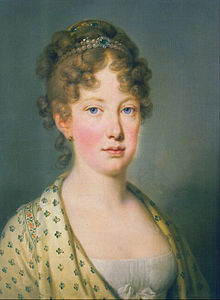
- Born: January 22, 1797 at Schönbrunn Palace in Vienna, Austria
- Parents: Franz II, Holy Roman Emperor and Maria Theresa of the Two Sicilies
- Married: King Pedro VI of Portugal (also Emperor Pedro I of Brazil) in 1817
- Died: December 11, 1826, aged 29, at the Palacio de São Cristovão in Rio de Janeiro, Brazil
- Buried: Ajuda Convent in Cinelândia Square in Rio de Janeiro, Brazil; when the convent was demolished in 1911, Leopoldina’s remains were transferred to the Convent of St. Anthony in Rio de Janeiro, Brazil; in 1954, Leopoldina’s remains were transferred to the Brazilian Imperial Crypt and Chapel under the Monument of the Ipiranga (Monument to the Independence of Brazil) in São Paulo, Brazil
- Unofficial Royalty: Maria Leopoldina of Austria, Empress of Brazil, Queen of Portugal
After giving birth to seven children, Maria Leopoldina suffered a miscarriage on December 2, 1826. She died nine days later from puerperal fever (childbed fever).
********************
Maria II, Queen Regnant of Portugal
- Born: April 4, 1819 at the Palace of São Cristóvão in Rio de Janeiro, Brazil
- Parents: Pedro IV and I, King of Portugal and first Emperor of Brazil and Maria Leopoldina, Archduchess of Austria
- Married: (1) Auguste Charles, 2nd Duke of Leuchtenberg, son of Eugène de Beauharnais, grandson of Empress Josephine in 1835 (2) Ferdinand of Saxe-Coburg and Gotha in 1836
- Died: November 15, 1853, aged 34, at the Palace of Necessidades in Lisbon, Portugal
- Buried: Royal Pantheon of the House of Braganza at the Monastery of São Vicente de Fora in Lisbon, Portugal
- Unofficial Royalty: Queen Maria II of Portugal
Maria II faced problems in giving birth with prolonged and extremely difficult labors. She had eleven pregnancies: seven resulted in children who survived childhood, two babies died within hours of birth, and two were stillbirths. By the time Maria was 25 years old, she was obese and the births became even more complicated. The combination of many successive pregnancies, her obesity which eventually caused her heart problems, and the prolonged, difficult labors led doctors to warn Maria about the serious risks she would face in future pregnancies. Maria replied, “If I die, I die at my post.” On November 15, 1853, Maria died after giving birth to a son, Infante Eugénio who died just after birth
********************
RUSSIA
Maria Ilyinichna Miloslavskaya, Tsaritsa of All Russia

- Born: April 11, 1624 in Moscow, Russia
- Parents: Ilya Danilovich Miloslavsky and Ekaterina Feodorovna Narbekova
- Married: Alexei I, Tsar of All Russia in 1648
- Died: August 18, 1669, aged 45 in Moscow, Russia
- Buried: first at the Ascension Convent in the Moscow Kremlin in Moscow, Russia; in 1929 moved to the Archangel Cathedral in the Moscow Kremlin in Moscow, Russia
- Unofficial Royalty: Maria Ilyinichna Miloslavskaya, Tsaritsa of All Russia
Maria Ilyinichna died of puerperal fever (childbed fever) five days after her most difficult childbirth. Her thirteenth child Yevdokia Alexeevna lived for only two days.
********************
Charlotte Christine of Brunswick-Lüneburg, Tsarevna of Russia

- Born: August 28, 1694 in Wolfenbüttel, Duchy of Brunswick-Lüneburg, now in Lower Saxony, Germany
- Parents: Ludwig Rudolf, Duke of Brunswick-Lüneburg and Christine Luise of Oettingen-Oettingen
- Married: Tsarevich Alexei Petrovich of Russia, son and heir of Peter I ( the Great), Emperor of All Russia in 1711
- Died: November 2, 1715, aged 21, in St. Petersburg, Russia
- Buried: Peter and Paul Cathedral in St. Petersburg, Russia
- Wikipedia: Charlotte Christine of Brunswick-Lüneburg, Tsarevna of Russia
During her second pregnancy, Charlotte Christine suffered from rheumatic pains. When she was seven months pregnant, she fell down the stairs. In severe pain, she was forced to spend the last weeks of her pregnancy in bed. Charlotte Christine gave birth to a son Peter Alexeivich, the future Peter II, Emperor of All Russia. The new mother felt well until the third day after the birth when abdominal pain, fever, and delirium developed. She died a week later from puerperal fever (childbed fever). Her son Peter II ruled Russia for three years until his death from smallpox at age 14.
********************
Grand Duchess Anna Petrovna of Russia, Duchess of Holstein-Gottorp
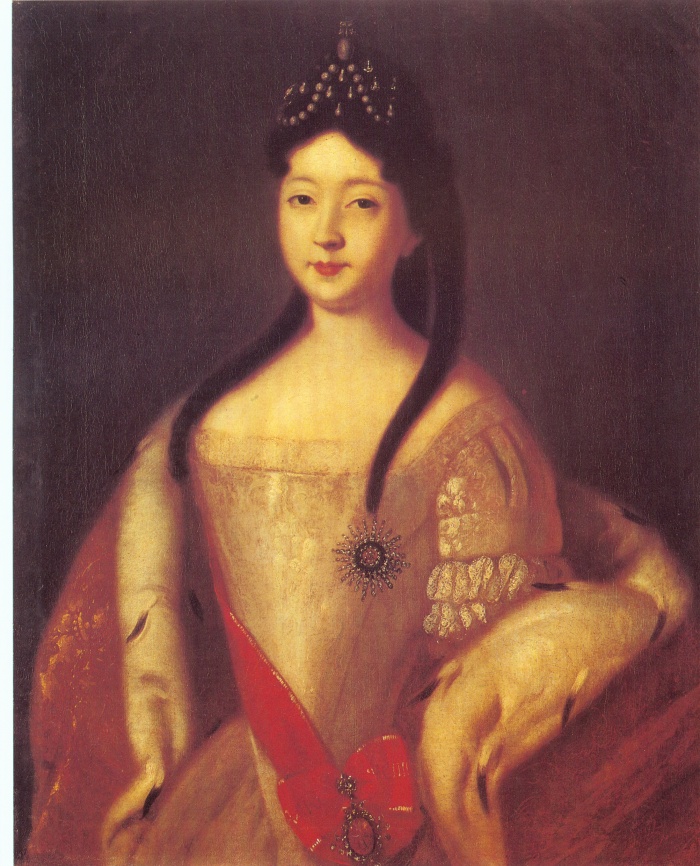
- Born: February 7, 1708 in Moscow, Russia
- Parents: Peter I (the Great), Emperor of All Russia and Catherine I, Empress of All Russia, born Marta Helena Skowrońska
- Married: Karl Friedrich, Duke of Holstein-Gottorp in 1724
- Died: March 4, 1728, aged 20, at Kiel Castle in Kiel, Duchy of Holstein-Gottorp, now in Schleswig-Holstein, Germany
- Buried: Peter and Paul Cathedral in St. Petersburg, Russia
- Unofficial Royalty: Anna Petrovna of Russia, Duchess of Holstein-Gottorp
Anna Petrovna gave birth to her only child, a son named Carl Peter Ulrich. He would rule Russia as Peter III, Emperor of All Russia for six months until he was deposed by his wife, born Sophie of Anhalt-Zerbst, who succeeded him on the throne as Catherine II (the Great), Empress of All Russia. Anna Petrovna died from puerperal fever (childbed fever) two weeks after the birth of her son. Before her death, Anna expressed her desire to be buried at the Peter and Paul Cathedral in St. Petersburg. Anna’s coffin was taken by boat to St. Petersburg where it was buried at the Peter and Paul Cathedral across an aisle from her parents’ tomb.
********************
Anna Leopoldovna of Russia
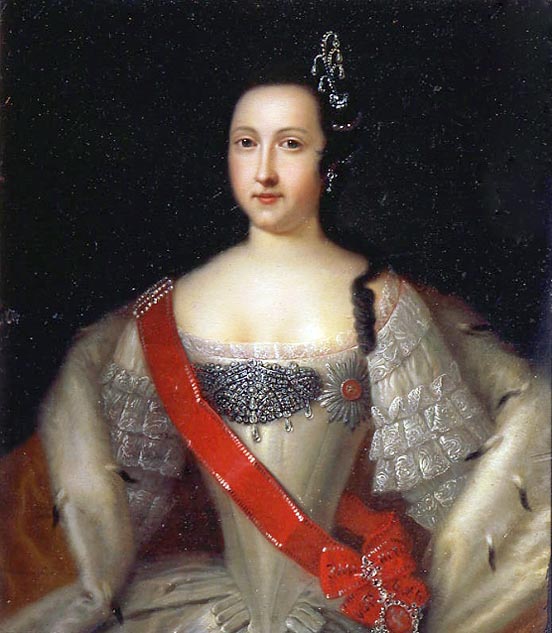
- Born: December 18, 1718 in Rostock, Duchy of Mecklenburg-Schwerin, now in Mecklenburg-Vorpommern, Germany
- Parents: Karl Leopold, Duke of Mecklenburg-Schwerin and Tsarevna Catherine Ivanovna of Russia, daughter of Ivan V, Tsar of All Russia
- Married: Duke Anton Ulrich of Brunswick-Lüneburg in 1739
- Died: March 19, 1746, aged 27, in Kholmogory, Archangelgorod Governorate, Russia
- Buried: Annunciation Church at the Alexander Nevsky Monastery in St. Petersburg, Russia
- Wikipedia: Anna Leopoldovna of Russia
The story of Anna Leopoldovna and her family is one of the most tragic stories in royal history. Her eldest child Ivan Antonovich succeeded to the Russian throne in 1740 at the age of two months as Ivan VI, Emperor of All Russia. A little more than a year later, Ivan was deposed and spent the next 23 years imprisoned before being murdered during the reign of Catherine II (the Great). His parents spent the rest of their lives imprisoned and with the exception of their eldest daughter, all their other children were born in prison. Their children remained imprisoned until 1780. Anna Leopoldovna died of puerperal fever (childbed fever), nine days after the birth of her son Alexei Antonovich.
********************
Wilhelmina Luise of Hesse-Darmstadt, Natalia Alexeievna, Tsarevna of Russia

- Born: June 25, 1755 in Prenzlau, Kingdom of Prussia, now in Brandenburg, Germany
- Parents: Ludwig IX, Landgrave of Hesse-Darmstadt and Caroline of Zweibrücken
- Married: Paul Petrovich, Tsarevich of Russia, the future Paul I of Russia, Emperor of All Russia, in 1773
- Died: April 26, 1776, aged 20, in St. Petersburg, Russia
- Buried: Annunciation Church at the Alexander Nevsky Monastery in St. Petersburg, Russia
- Unofficial Royalty: Wilhelmina Luise of Hesse-Darmstadt, Natalia Alexeievna, Tsarevna of Russia
On the morning of Sunday, April 10, 1776, Paul awakened his mother, Catherine II (the Great), with the news that Natalia had been in labor since midnight. By noon, Natalia was in such pain that it seemed the birth would happen very soon. The afternoon and evening passed without a birth and Natalia was either in terrible pain or exhausted sleep. Monday passed and there was still no birth. On Tuesday, the doctors and midwives agreed that the child was probably dead. On Wednesday, the doctors all but gave up hope of saving Natalia and she was given the last rites. At six in the evening of Friday, April 15, 1776, Natalia died after six days of agony. Neither Catherine nor Paul had left her side. Catherine was further saddened that her dead grandchild had been a perfectly formed boy who had been too large to pass through the birth canal. Despite her exhaustion and sadness, Catherine remained in control. She had to because Paul’s grief was so severe that he was refusing to allow Natalia’s body to be removed.
********************
Alexandra of Greece and Denmark, Grand Duchess Alexandra Georgievna of Russia

- Born: August 30, 1870 at the Mon Repos Villa in Corfu, Greece
- Parents: King George I of Greece and Olga Konstantinovna of Russia
- Married: Grand Duke Paul Alexandrovich of Russia, son of Emperor Alexander II of Russia, in 1889
- Died: September 24, 1891, aged 21, at the Ilinskoye Estate outside Moscow, Russia
- Buried: Peter and Paul Cathedral in St. Petersburg, Russia; in 1939 moved to Royal Cemetery on the grounds of Tatoi Palace near Athens, Greece
- Unofficial Royalty: Alexandra of Greece and Denmark, Grand Duchess Alexandra Georgievna of Russia,
Alexandra, who was seven months pregnant with her second child, took a walk with her friends on the bank of the Moskva River at Ilinskoye, the estate of her husband’s brother Grand Duke Sergei Alexandrovich. She jumped directly into a boat that was permanently moored there and fell. The next day, she collapsed in the middle of a ball from violent labor pains. Alexandra gave birth prematurely to a son, Grand Duke Dmitri Pavlovich and then she lapsed into a coma. Alexandra did not recover consciousness and died six days later.
It seems that the fall in the boat was not the actual cause of the premature labor. An autopsy showed that Alexandra’s premature labor was caused by eclampsia, a condition that causes a pregnant woman, usually previously diagnosed with preeclampsia (high blood pressure and protein in the urine), to develop seizures or coma. Nephritis, a kidney disorder, and heart damage were also detected. Her son Dmitri Pavlovich was one of the conspirators in the murder of Grigori Rasputin.
********************
SARDINIA
Anne Christine of Sulzbach, Princess of Piedmont

- Born: February 5, 1704 at the Palace of Sulzbach-Rosenberg in Amberg-Sulzbach, Kingdom of Bavaria, now in Bavaria, Germany
- Parents: Theodore Eustace, Prince Palatine of Sulzbach and Princess Eleonore of Hesse-Rheinfels-Rotenburg
- Married: Carlo Emanuele, Prince of Piedmont, the future Carlo Emanuele III, King of Sardinia, in 1722
- Died: March 12, 1723, aged 19, at the Royal Palace of Turin, Kingdom of Sardinia, now in Italy
- Buried: Basilica of Superga in Turin, Kingdom of Sardinia, now in Italy
- Unofficial Royalty: Anne Christine of Sulzbach, Princess of Piedmont
Five days after giving birth to her only child, a son who died a year later, Anne Christine died from childbirth complications.
********************
Elisabeth Therese of Lorraine, Queen of Sardinia

- Born: October 15, 1711 at the Château de Lunéville in Lunéville, Duchy of Lorraine, now in France
- Parents: Leopold, Duke of Lorraine and Élisabeth Charlotte d’Orléans
- Married: Carlo Emanuele III, King of Sardinia in 1737
- Died: July 3, 1741, aged 29, at the Palace of Venaria in Turin, Kingdom of Sardinia, now in Italy
- Buried: Basilica of Superga in Turin, Kingdom of Sardinia, now in Italy
- Unofficial Royalty: Elisabeth Therese of Lorraine, Queen of Sardinia
Elisabeth Therese was a granddaughter of Philippe I, Duke of Orléans, the only sibling of King Louis XIV of France. She died from puerperal fever (childbed fever) two weeks after giving birth to her third child.
********************
SAXE-ALTENBURG
Marie of Prussia, Princess Albert of Saxe-Altenburg

- Born: September 14, 1855 at the Marmorpalais in Potsdam, Kingdom of Prussia, now in Brandenburg, Germany
- Parents: Prince Friedrich Karl of Prussia and Princess Maria Anna of Anhalt-Dessau
- Married (1) Prince Hendrik of the Netherlands in 1878, died 1879 (2) Prince Albert of Saxe-Altenburg in 1885
- Died: June 20, 1888, aged 32, at Schloss Abrechtesberg in Dresden, Kingdom of Saxony, now in Saxony, Germany
- Buried: Ducal Mausoleum in the Altenburg Cemetery in Altenburg, Duchy of Saxe-Altenburg, now in Thuringia, Germany
- Wikipedia: Marie of Prussia, Princess Albert of Saxe-Altenburg
Marie died of puerperal fever (childbed fever) after giving birth to her second daughter. She was the sister of Princess Louise Margaret of Prussia who married Queen Victoria’s son Prince Arthur, Duke of Connaught. Marie was a godmother to the Connaughts’ only son Prince Arthur of Connaught.
********************
SAXE-GOTHA-ALTENBURG
Luise Charlotte of Mecklenburg-Schwerin, Hereditary Princess of Saxe-Gotha-Altenburg

- Born: November 19, 1779 in Schwerin, Duchy of Mecklenburg-Schwerin, now in Mecklenburg-Vorpommern, Germany
- Parents: Friedrich Franz I, future Duke of Mecklenburg-Schwerin and Louise of Saxe-Gotha-Altenburg
- Married: Augustus, Hereditary Prince of Saxe-Gotha-Altenburg, the future Duke of Saxe-Gotha-Altenburg, in 1797
- Died: January 4, 1801, aged 21, at Schloss Friedenstein in Gotha, Duchy of Saxe-Gotha-Altenburg, now in Thuringia, Germany
- Buried: ?
- Wikipedia: Luise Charlotte of Mecklenburg-Schwerin, Hereditary Princess of Saxe-Gotha-Altenburg
Luise Charlotte gave birth to her only child, a daughter named Luise after her. She never recovered from childbirth and died eleven days later. Her daughter Luise of Saxe-Gotha-Altenburg married Ernst I, Duke of Saxe-Coburg and Gotha. Luise and Ernst had two sons: Ernst II, Duke of Saxe-Coburg and Gotha and Prince Albert of Saxe-Coburg and Gotha who married Queen Victoria of the United Kingdom.
********************
SAXE-HILDBURGHAUSEN
Christiane Sophie Charlotte of Brandenburg-Bayreuth, Duchess of Saxe-Hildburghausen

- Born: October 15, 1733 in Neustadt an der Aisch, Kingdom of Prussia, now in Bavaria, Germany
- Parents: Friedrich Christian, Margrave of Brandenburg-Bayreuth and Victoria Charlotte of Anhalt-Zeitz-Hoym
- Married: Ernst Friedrich III, Duke of Saxe-Hildburghausen in 1757
- Died: October 8, 1757, aged 23, at Jagdschloss Seidingstadt in Straufhain, Duchy of Saxe-Hildburghausen, now in Thuringia, Germany
- Buried: ?
- Wikipedia: Christiane Sophie Charlotte of Brandenburg-Bayreuth, Duchess of Saxe-Hildburghausen
Christiane Sophie Charlotte died four days after giving birth to her only child Princess Marie Sophie Friederike Caroline, who died nine days later.
********************
SAXE-MEININGEN
Charlotte of Prussia, Hereditary Princess of Saxe-Meiningen
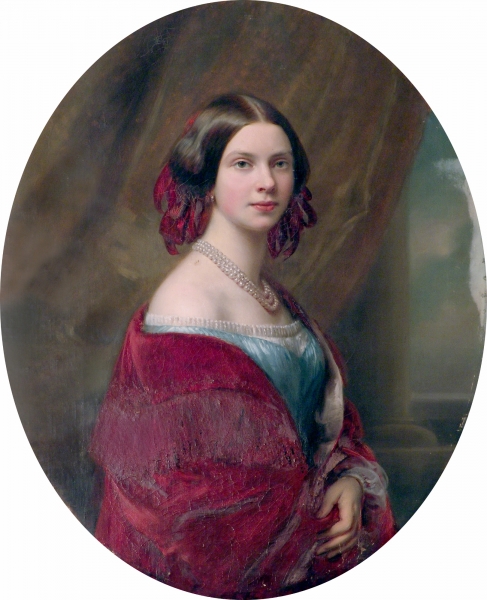
- Born: June 21, 1831 at Schönhausen Palace in Berlin, Kingdom of Prussia, now in Brandenburg, Germany
- Parents: Prince Albrecht of Prussia and Princess Marianne of the Netherlands
- Married: Hereditary Prince Georg of Saxe-Meiningen, the future Georg II, Duke of Saxe-Meiningen, in 1850
- Died: March 30, 1855, aged 23, in Meiningen, Duchy of Saxe-Meiningen, now in Thuringia, Germany
- Buried: Park Cemetery in Meiningen, Duchy of Saxe-Meiningen, now in Thuringia, Germany
- Unofficial Royalty: Charlotte of Prussia, Hereditary Princess of Saxe-Meiningen
Charlotte was the granddaughter of two kings, Friedrich Wilhelm III of Prussia and Willem I of the Netherlands. She died of childbirth complications following the birth of her fourth child, a son, who did not survive.
********************
SCOTLAND
Isabella of Mar, Countess of Carrick
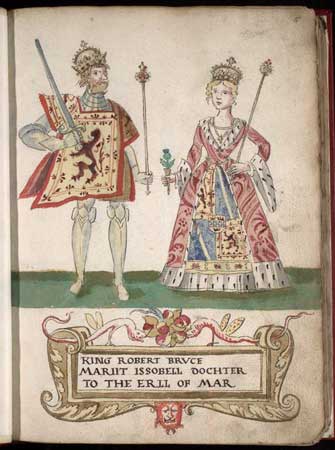
- Born: about 1277 at Kildrummy Castle in Kildrummy, Aberdeenshire, Scotland
- Parents: Domhnall (Donald), 6th Earl of Mar and Elen the Younger ferch Llywelyn, an illegitimate daughter of the de facto Prince of Wales, Llywelyn Fawr (Llywelyn the Great), Prince of Gwynedd and Prince of Powys Wenwynwyn
- Married: Robert the Bruce, Earl of Carrick, the future Robert I, King of Scots, in 1295
- Died: December 12, 1296, aged 19, at the Manor of Cardross in Dunbartonshire, Scotland
- Buried: Paisley Abbey in Paisley, Renfrewshire, Scotland
- Unofficial Royalty: Isabella of Mar, Countess of Carrick
Isabella had a healthy pregnancy but died soon after giving birth to a daughter named Marjorie. Some sources say a caesarean section, which would have been fatal for the mother, was necessary to deliver Marjorie.
********************
Marjorie Bruce

- Born: December 12, 1296 at the Manor of Cardross in Dunbartonshire, Scotland
- Parents: Robert I the Bruce, King of Scots and Isabella of Mar
- Married: Walter Stewart, 6th High Steward of Scotland in 1315
- Died: March 2, 1316, aged 19, at Paisley Abbey in Paisley, Renfrewshire, Scotland
- Buried: Paisley Abbey in Paisley, Renfrewshire, Scotland
- Wikipedia: Marjorie Bruce
Like her mother Isabella of Mar, who died in childbirth delivering her only child, Marjorie also died in childbirth at age 19. Princess Marjorie, once her father became Robert I, King of Scots in 1306, married Walter Stewart, 6th High Steward of Scotland in 1315. Marjorie, who was pregnant, was riding in Paisley, Renfrewshire. Scotland. Her horse was suddenly startled and threw her to the ground. Marjorie went into premature labor and her child Robert was delivered by caesarean section causing Marjorie to die. Her son became Robert II, King of Scots, the first monarch of the House of Stewart. Marjorie’s descendants include the House of Stewart/Stuart, all their successors on the thrones of Scotland, Great Britain, and the United Kingdom, and many other European royal families.
********************
SERBIA
Zorka of Montenegro, Princess Karađorđević

- Born: December 23, 1864, in Cetinje, Montenegro
- Parents: King Nicholas I of Montenegro and Milena Vukotić
- Married: Prince Peter Karađorđević, the future King Peter I of Serbia, in 1883
- Died: March 16, 1890, aged 25, in Cetinje, Montenegro
- Buried: first at the Cetinje Monastery in Cetinje, Montenegro, later moved to the Mausoleum of the Serbian Royal Family at St. George’s Church, Oplenac, Serbia
- Unofficial Royalty: Zorka of Montenegro, Princess Karađorđević
Zorka died due to birth complications following the birth of her fifth child Andrija who died a few days after his mother.
********************
SICILY
Isabella of England, Holy Roman Empress, Queen of Sicily
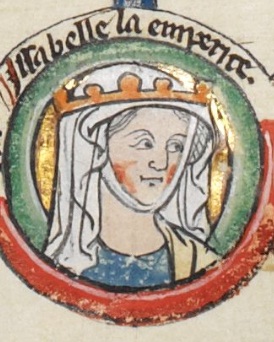
- Born: 1214 in Gloucester, England
- Parents: King John of England and Isabella of Angoulême
- Married: Friedrich II, Holy Roman Emperor and King of Sicily in 1235
- Died: December 1, 1241, aged 27, at the Palace of Foggia in Apulia, Kingdom of Sicily, now in Italy
- Buried: Andria Cathedral in Andria, Apulia, Italy, next to her husband’s second wife Queen Isabella II of Jerusalem (Yolande of Brienne), who also died after childbirth
- Unofficial Royalty: Isabella of England, Holy Roman Empress, Queen of Sicily
Isabella had at least four children and died due to childbirth complications after delivering her last child Margaret who survived.
********************
SPAIN
Isabella of Portugal, Holy Roman Empress and Queen of Spain, Germany, Italy, Naples and Sicily and Duchess of Burgundy

- Born: October 24, 1503 in Lisbon, Portugal
- Parents: King Manuel I of Portugal and Maria of Aragon
- Married: Charles V, Holy Roman Emperor, King of Spain, Germany, Italy, Naples and Sicily and Duke of Burgundy in 1526
- Died May 1, 1539, aged 35, at theFuensalida Palace in Toledo, Spain
- Buried: Royal Chapel of Granada in Granada, Spain; transferred in 1574 by her son King Felipe II of Spain to the Royal Crypt of the Monastery of El Escorial in El Escorial, Spain
- Unofficial Royalty: Isabella of Portugal, Holy Roman Empress, Queen of Spain
Isabella had a total of seven pregnancies. She gave birth to five live children, including King Felipe II of Spain, but only three children survived to adulthood. She also had two stillbirths, including her seventh pregnancy. Isabella suffered from chronic malaria, causing her health to be very fragile. During the third month of her seventh pregnancy, she became ill, suffered pregnancy complications that resulted in a stillbirth and her death. Her husband was so devastated by her death that he locked himself up in a monastery for two months, where he prayed and mourned for his wife alone.
********************
Maria Manuela of Portugal, Princess of Asturias

- Born: October 15, 1527 in Coimbra, Portugal
- Parents: King João III of Portugal and Catherine of Austria
- Married: Felipe, Prince of Asturias, the future King Felipe II of Spain, in 1543
- Died: July 12, 1545, aged 17, in Valladolid, Spain
- Buried: first at the Royal Chapel of Granada in Granada, Spain; but later transferred to Royal Crypt of the Monastery of El Escorial in El Escorial, Spain
- Unofficial Royalty: Maria Manuela of Portugal, Princess of Asturias
Maria Manuela died due to hemorrhaging four days after giving birth to her only child Carlos who was born with both physical and psychological issues and predeceased his father.
********************
Elisabeth of Valois, Queen of Spain

- Born: April 2, 1545 at the Palace of Fontainebleau in Fontainebleau, France
- Parents: King Henri II of France and Catherine de’ Medici
- Married: King Felipe II of Spain in 1559
- Died: October 3, 1568, aged 23, at the Royal Palace of Aranjuez in Aranjuez, Spain
- Buried: Royal Crypt of the Monastery of El Escorial in El Escorial, Spain
- Unofficial Royalty: Elisabeth of Valois, Queen of Spain
Elisabeth’s first pregnancy resulted in a stillborn son. Next, she miscarried twin daughters. She then successfully gave birth to two daughters a year apart. A fifth pregnancy caused severe vomiting and dizziness which the doctors tried to relieve by bleeding which would have further weakened her and not helped her as the doctors then believed. On October 3, 1568, Elisabeth went into premature labor that turned out to be very complicated and so all of the doctors of the royal court were called. After much suffering, Elisabeth gave birth to a daughter of five months of gestation. The daughter was baptized Juana but only lived for ninety minutes. An hour after her daughter died, 23-year-old Elisabeth died.
********************
Margaret of Austria, Queen of Spain

- Born: December 25, 1584 in Graz, Austria
- Parents: Archduke Charles II of Austria and Maria Anna of Bavaria
- Married: King Felipe III of Spain in 1599
- Died: October 3, 1611, aged 26, in San Lorenzo de El Escorial, Spain
- Buried: Royal Crypt of the Monastery of El Escorial in El Escorial, Spain
- Unofficial Royalty: Margaret of Austria, Queen of Spain
Margaret died from complications while giving birth to her eighth child Alfonso who only lived a year. Through her eldest child, Margaret was the maternal grandmother of King Louis XIV of France.
********************
Maria Isabel of Portugal, Queen of Spain

- Born: May 19, 1797, at the Palace of Queluz in Queluz, Portugal
- Parents: King João VI of Portugal and Infanta Carlota Joaquina of Spain
- Married: King Ferdinand VII of Spain in 1816
- Died: December 26, 1818, aged 21, at the Royal Palace of Aranjuez in Aranjuez, Spain
- Buried: Pantheon of Infantes of the Monastery of El Escorial in El Escorial, Spain
- Unofficial Royalty: Maria Isabel of Portugal, Queen of Spain
Maria Isabel had a daughter, María Luisa Isabel, who was born on August 21, 1817 but died five months later. However, Maria Isabel soon became pregnant again, but the pregnancy was difficult. Maria Isabel went into labor and there were terrible complications. The child, a daughter, was in breech position and died in utero. Maria Isabel had lost consciousness and appeared to have stopped breathing so the doctors believed she had died. When they began to cut her open to remove the dead child, she let out a cry of pain, fainted, and bled to death.
********************
Maria de las Mercedes of Orléans, Queen of Spain

- Born: June 24, 1860 at the Royal Palace of Madrid in Madrid, Spain
- Parents: Antoine of Orléans, Duke of Montpensier (son of King Louis Philippe of France) and Infanta Luisa Fernanda of Spain (daughter of King Ferdinand VII of Spain)
- Married: her first cousin King Alfonso XII of Spain in 1878
- Died: June 26, 1878, aged 18, at the Royal Palace of Madrid in Madrid, Spain
- Buried: Pantheon of Infantes of the Monastery of El Escorial in El Escorial, Spain; in 2000 re-interred at the Cathedral of Santa María la Real de La Almudena in Madrid, Spain
- Unofficial Royalty: Maria de las Mercedes of Orléans, Queen of Spain
In June 1878, it was announced that Mercedes was pregnant and the country rejoiced. However, the joy was short-lived as Mercedes suffered a miscarriage. Shortly after the miscarriage, Mercedes became suddenly ill. Within hours, she was at death’s door with typhoid fever.
********************
TUSCANY
Luisa Maria of Naples and Sicily, Grand Duchess of Tuscany

- Born: July 27, 1773 at the Royal Palace in Naples, Kingdom of the Two Sicilies, now in Italy
- Parents: King Ferdinand I of the Two Sicilies and Maria Carolina of Austria
- Married: Ferdinand III, Grand Duke of Tuscany in 1790
- Died: September 19, 1802, aged 29, at the Hofburg Palace in Vienna, Austria
- Buried: Imperial Crypt at the Capuchin Church in Vienna, Austria
- Unofficial Royalty: Luisa Maria of Naples and Sicily, Grand Duchess of Tuscany
Luisa Maria died while giving birth to her sixth child, a stillborn son.
********************
TWO SICILIES
Blessed Maria Cristina of Savoy, Queen of the Two Sicilies
- Born: 14 November 14, 1812 in Cagliari, Kingdom of Sardinia, now in Italy
- Parents: King Vittorio Emanuele I of Sardinia and Maria Teresa of Austria-Este
- Married: King Ferdinando II of the Two Sicilies in 1832
- Died: January 21, 1836, aged 23, in Naples, Kingdom of the Two Sicilies
- Buried: Basilica of Santa Chiara in Naples, Kingdom of the Two Sicilies
- Unofficial Royalty: Blessed Maria Cristina of Savoy, Queen of the Two Sicilies
Maria Cristina died five days after giving birth to her only child, the future King Francesco II of the Two Sicilies. Maria Cristina had been an extremely religious, fervent Roman Catholic. After her death, she was called “The Holy Queen.” Her husband started the beatification process and in 1859, she was proclaimed Venerable. In 2013, Pope Francis authorized a miracle attributed to the intercession of Maria Cristina. On January 25, 2014, a beatification ceremony was held at the Basilica of Santa Chiara in Naples, Italy, Maria Cristina’s burial site, where she was proclaimed Blessed Maria Cristina of Savoy, one step away from sainthood.
********************
María de las Mercedes, Princess of Asturias, Princess of Bourbon-Two Sicilies
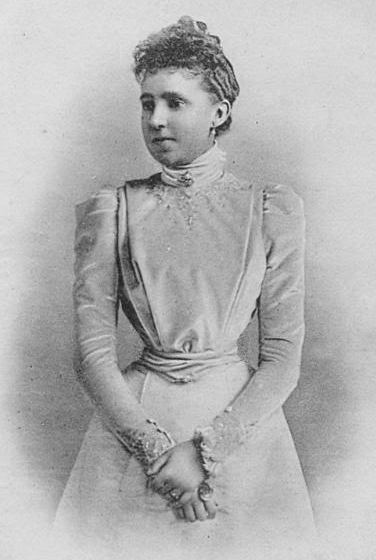
- Born: September 11, 1880 at the Royal Palace of Madrid in Madrid, Spain
- Parents: King Alfonso XII of Spain and Maria Christina of Austria
- Married: Prince Carlos of Bourbon-Two Sicilies in 1901
- Died: October 17, 1904, aged 24, at the Royal Palace of Madrid in Madrid, Spain
- Buried: Pantheon of Infantes of the Monastery of El Escorial in El Escorial, Spain
- Wikipedia: María de las Mercedes, Princess of Asturias, Princess of Bourbon-Two Sicilies
In 1885, Mercedes’ father died. Her mother was pregnant and served as Regent while awaiting the birth. Mercedes’ brother was King Alfonso XIII from birth and because he did not marry until after her death, she was Princess of Asturias, the heir to the Spanish throne for the rest of her life. Mercedes and her husband had two sons within two years of their marriage. In 1904, Mercedes was once again pregnant. Three weeks before her due date, Mercedes became very ill. She had appendicitis but it was initially misdiagnosed as intestinal cramps. Peritonitis set in and Mercedes gave birth to her third child but she died the following day.
********************
WALES
Eleanor de Montfort, Princess of Wales
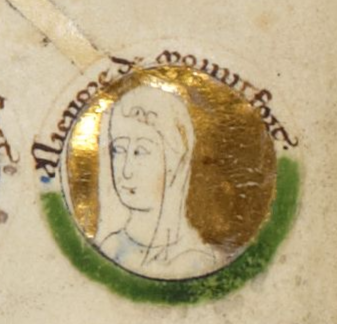
- Born: 1252
- Parents: Simon de Montfort, 6th Earl of Leicester and Eleanor of England, a daughter of King John of England
- Married: Llywelyn ap Gruffudd, Prince of Wales in 1275
- Died: June 19, 1282, aged 29–30, in Palace of Aber Garth Celyn in Gwynedd, Wales
- Buried: Franciscan Friary in Llanfaes, Anglesey, Wales
- Wikipedia: Eleanor de Montfort, Princess of Wales
Eleanor died in childbirth giving birth to her only child Gwenllian ferch Llywelyn. A few months after Gwenllian’s birth, her father and uncle were put to death by the English army under King Edward I. The infant Gwenllian was sent to Gilbertine Priory in Sempringham, England to prevent her from marrying and having sons who could claim to be Prince of Wales. She died at the priory 54 years later.
********************
WÜRTTEMBERG
Augusta of Brunswick-Wolfenbüttel, Princess Friedrich of Württemberg

- Born: December 3, 1764, in Brunswick, Duchy of Brunswick-Wolfenbüttel, now in Lower Saxony, Germany
- Parents: Karl Wilhelm Ferdinand, Duke of Brunswick-Wolfenbüttel and Princess Augusta of Wales, a sister of King George III of the United Kingdom
- Married: Prince Friedrich of Württemberg, the future King Friedrich I of Württemberg, in 1780
- Died September 27, 1788, aged 23, at Koluvere Castle in Lohde, Estonia
- Buried: Kullamaa Church in Kullamaa, Estonia
- Unofficial Royalty: Augusta of Brunswick-Wolfenbüttel, Princess Friedrich of Württemberg
Despite having four children, Augusta and her husband Friedrich had a very unhappy marriage. Friedrich had impressed Empress Catherine the Great while visiting Russia, and she made him Governor-General of Eastern Finland. Augusta asked Catherine for protection from her husband. She claimed that Friedrich was abusive to her, and was having affairs with several men. The Empress took Augusta in and told Friedrich to leave the country. Augusta hoped to obtain a divorce, but her father would not permit it. The Empress provided Augusta with a home at Koluvere Castle in Estonia, along with a custodian, Wilhelm von Pohlmann. Soon, Augusta and von Pohlmann began an affair and she became pregnant. Augusta went into premature labor and delivered a stillborn baby. Fearing that their affair would become known, von Pohlmann refused to call for a doctor and Augusta died of blood loss.
********************
Marie of Waldeck and Pyrmont, Princess Wilhelm of Württemberg

- Born: 23 May 23, 1857 in Arolsen, Principality of Waldeck and Pyrmont, now in Hesse, Germany
- Parents: Georg Viktor, Prince of Waldeck and Pyrmont and Helena of Nassau
- Married: Prince Wilhelm of Württemberg, the future King Wilhelm II of Württemberg, in 1877
- Died: April 30, 1882, aged 24, at Ludwigsburg Palace in Ludwigsburg, Kingdom of Württemberg, now in Baden-of Württemberg, Germany
- Buried: Old Cemetery on the grounds of Ludwigsburg Palace in Ludwigsburg, Kingdom of Württemberg, now in Baden-of Württemberg, Germany
- Unofficial Royalty: Marie of Waldeck and Pyrmont, Princess Wilhelm of Württemberg
After giving birth to two children, Marie gave birth to a stillborn daughter, suffered serious complications, and died six days later. Marie was the sister of Helena of Waldeck and Pyrmont, the wife of Queen Victoria’s son Prince Leopold, Duke of Albany, and Emma of Waldeck and Pyrmont who married King Willem II of the Netherlands.
********************




